Study Tour of Californian Plants and Habitats 2025
28 March – 18 April 2025
Bursary Report by Mark Matthews
Introduction
As a senior horticulturist within the Mediterranean Biome at the Eden Project, Cornwall, I look after our living collections of plants which come from Mediterranean climates and plants that are grown as crops in these regions. Three of the exhibits I look after are California, Citrus and the Cacti and Succulent Terrace. California is a wild exhibit showcasing habitats such as chaparral, coastal scrub, sage scrub and foothills. Citrus is a crop exhibit demonstrating where our citrus fruit come from, how they grow and the diversity of fruit available. The Cacti and Succulent Terrace is an area where we showcase the variety of cacti and succulents found in arid regions of the world.
In order for these exhibits to fulfil their potential, be aesthetically pleasing whilst also inspiring and educating visitors to the Eden Project, the displays must be well informed, as realistic as possible and plants within them must be healthy, appropriate and representative of the habitat or crop the exhibit displays.
I am a firm believer that understanding how plants survive and grow in the wild can contribute greatly to the successful cultivation of plants in gardens. I therefore decided to travel to California to see their native wild plants and the conditions in which they grow, whilst simultaneously expanding my plant knowledge and identification skills and hoped to also learn more about Citrus cultivation in that region.
Therefore, in late March 2025, I undertook a self-led three-week study tour across California. Over the three weeks, I travelled extensively throughout the state, covering just under 3000 miles, beginning in the south at San Diego and following an anticlockwise route, reaching as far north as Point Reyes National Seashore, just north of San Francisco, before ending in Los Angeles. Three weeks provided time to botanise the various natural habitats and vegetation communities of the state, and to visit botanic gardens focused on displaying Californian native plants and citrus farms.
Aims and Objectives
- To explore the flora of the state of California, USA with particular emphasis on the cacti and succulents present in the deserts and the plants of the Californian Floristic Region.
- To visit Citrus growers in California to learn more about their cultivation, and the species and cultivars available.
- To learn more about the ethnobotanic uses of Californian native plants to the indigenous peoples whose land now is regarded as part of California.
Biogeography
The native plants of the state of California also comprise the plants of the Californian Floristic Region, one of Earth’s 36 recognised biodiversity hotspots. This region stretches from southern Oregon through most of California and into northern Baja California, Mexico, and encompasses a broad range of habitats and vegetation communities.
The climate of this region is Mediterranean, characterised by hot, dry summers and cool, wet winters, similar to some of the other Mediterranean biome regions such as the Mediterranean basin, parts of Chile, South Africa and Western Australia. This climate, along with California’s complex geology, topography, and microclimates have led to increased plant diversity in the region.
California is home to roughly 6,500 native plant species, of which around 30% are endemic, meaning they occur naturally nowhere else on Earth. Within the Californian Floristic Province specifically, about 42% of plant species are endemic.
The species richness of both the state of California and the California Floristic Region, along with its vulnerability due to the threat of habitat loss due to urban development, agriculture, altered fire regimes, and climate change makes the conservation of California’s native flora essential.
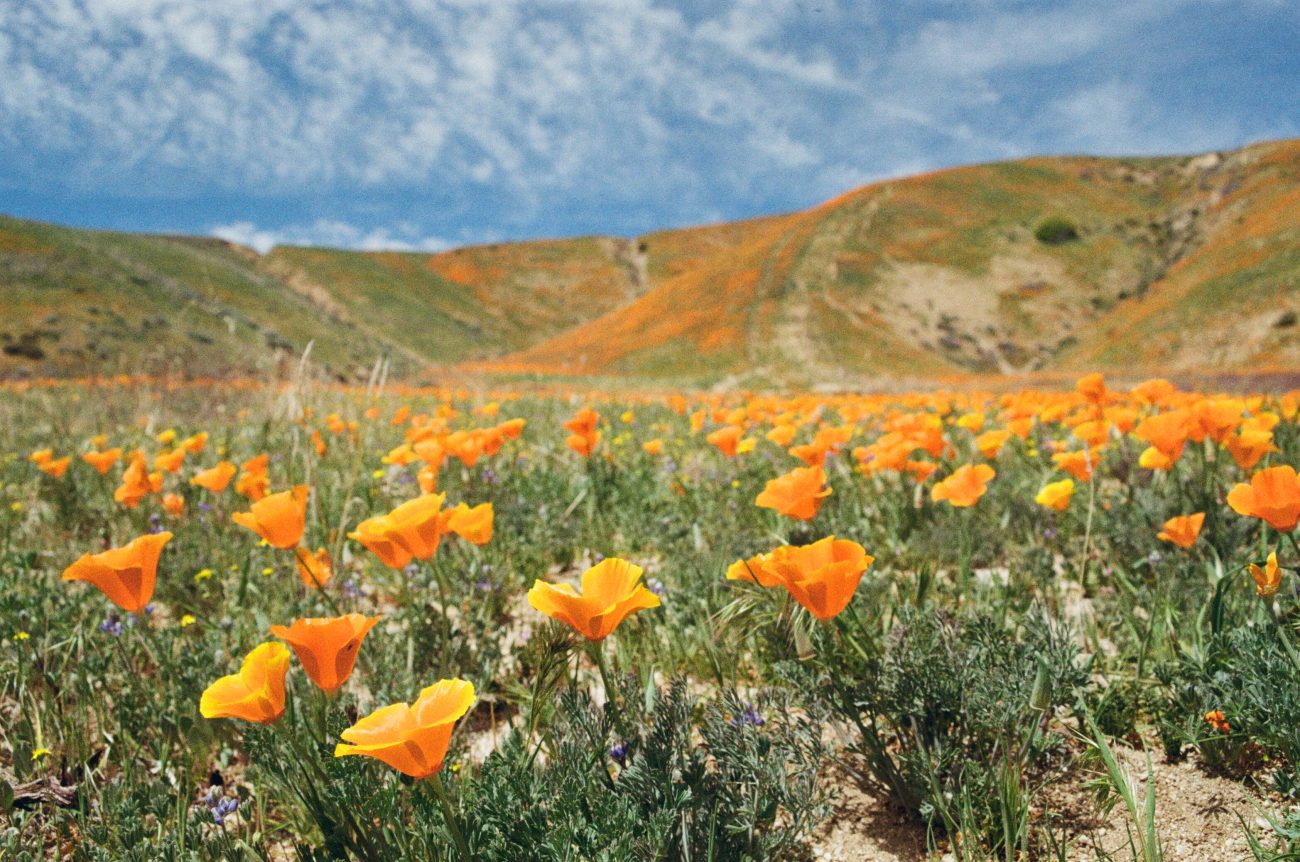
Eschscholzia californica in Antelope Valley
Vegetation Communities
Because of its diverse topography, geology and climatic conditions, California holds a wide range of vegetation communities. Each vegetation community is unique and supports different species of plants adapted to that habitat.
Chaparral
Chaparral is dominated by shrubs with leathery drought resistant and evergreen foliage. Many of these shrubs are less than 10ft tall and are often very dense, with trees and understory herbaceous perennials rare. The word Chaparral is derived from the Spanish word for scrub oak, chaparro. Some of the common scrub oaks that dominate chaparral habitats include Quercus berberidifolia (California scrub oak) and Q. vaccinifolia (huckleberry oak). Other Genera that dominate chapparal are Adenostoma fasciculatum (chamise), Heteromeles arbutifolia (toyon) and Arctostaphylos sp. (manzanita). Chaparral is fire adapted to a particular fire pattern but not fire adapted in general. The chaparral fire cycle is for large, high intensity fires to burn all above ground plant material every 30 to 150 years. If fire is too frequent, chaparral can be destroyed and replaced by non-native annual grassland.
Coastal Sage Scrub
Lower in elevation and more drought deciduous than the often evergreen chaparral, this community features soft leaved and often aromatic shrubs like Salvia mellifera (black sage), Eriogonum fasciculatum (California buckwheat), Encelia californica (California brittlebush) and Artemisia californica (California sagebush).
Woodlands
Woodlands in the valleys and foothills of California usually consist of dominant overstory trees such as Quercus sp., Pinus sp. and Juniperus sp., and variable understories such as grasses, shrubs or herbaceous perennials. Woodlands cover large areas of California and are found from 300 to 5000 ft in elevation.
Grasslands
California’s grasslands were once all native perennial grasslands, found across the state from low to middle elevations, consisting of species such as Stipa pulchra (purple needlegrass), Poa sp. (bluegrasses) and Aristida purpurea (purple three-awn). However, since colonisation by Europeans, non-native annual grasses, introduced as forage for livestock during agricultural development, have become widespread and now non-native grasslands dominate large areas of California, often out competing and displacing native vegetation.
Vernal Pools
Vernal pools are seasonal wetlands which form in natural shallow depressions, underlain by hard pans of clay soils which form an impermeable layer. These depressions fill with water during the winter and spring and then slowly dry out through evaporation as the spring moves into summer. As the water levels lower around the edges of the pool, wildflower seed germinate and then flower at differing times, often forming successional ring-shaped flower displays. The plants found in vernal pools are usually highly specialised endemics and are therefore usually very rare. Unfortunately 90 per cent of the vernal pools that once were found across flat areas of California have now been lost due to agricultural and urban development and the increase in non-native grasslands.
Riparian
Riparian vegetation is found surrounding perennial streams and rivers, and is distinctive because water is available to plants all year, even during the hot dry summers. Because of the constant availability of water, riparian zones usually have an overstory of trees such as Acer sp. (maples), Populus sp. (cottonwoods) and Platanus racemosa (Californian sycamore) amongst others, and highly variable and dense understories. Only 5-10% of original riparian habitat remains in California.
Wetlands
Wetlands, which can contain either salt or freshwater, are dominated by herbaceous perennial plants and support essential ethnobotanical plants such as Carex sp. (sedges), and Juncus sp. (rushes) which provided material for things such as basket weaving. Wetlands are highly sensitive to hydrological change.
Dunes
Coastal dune systems support plants which can tolerate salt spray, high winds and frequent natural disturbance, and occur from San Diego, along the west coast to Oregon. Dune systems also occur inland in desert areas where the high winds and extreme temperatures cause harsh growing conditions. Coastal dune vegetation is threatened by invasive species whilst inland dune vegetation is threatened by off road vehicles.
Conifer Forests
Conifer forests occur in 3 main areas of California, mountainous regions, coastal areas and deserts. In the mountainous regions, such as the Sierra Nevada, species such as Pinus ponderosa (Ponderosa pine), P. jeffreyi (Jeffrey pine), P. lambertiana (sugar pine), Calocedrus decurrens (incense cedar), Abies concolor (white fir), Pseudotsuga menziesii (Douglas fir) and of course the largest tree in the world in terms of mass, Sequoiadendron giganteum (giant sequoia) dominate. In coastal areas, conifer forests are dominated by Pseudotsuga menziesii (Douglas fir), Tsuga heterophylla (western hemlock, Pinus sp. (pines) and the tallest tree species in the world Sequoia sempervirens. In the deserts it is Pinus monophylla (singleleaf pinyon) and Juniperus californica (California juniper) which dominate.
Alpine
High elevations above the treeline host alpine plants which are adapted to the snow and wind. Most commonly found in the high Sierra Nevada but also found in other high elevation ranges.
Deserts
California has three desert regions, the Mojave, Sonoran and Great Basin deserts. Whilst each of these deserts have slightly differing characteristics, in general they all experience dry conditions and extreme temperature fluctuations. Some of the characteristic desert plants of California are Larrea tridentata (creosote), Encelia farinosa (brittlebush), Ferocactus cylindraceus (Californian barrel cactus), Opuntia sp. (prickly pear cacti), Cylindropuntia sp. (chollas), Yucca brevifolia (joshua tree) and wildflowers which form the famous super blooms when the weather conditions have been correct, such as Eschscholzia californica (Californian poppy).
Foothills
The Californian foothills refer to the transitional zones between California’s lowland valleys, like the Central Valley, and its higher mountain ranges, such as the Sierra Nevada. Because it is a transitional zone, it is a region where many vegetation communities can meet and overlap, resulting in rich biodiversity. Foothills often host a mix of oak woodland, grassland, riparian and chaparral.
Diary
28 March
On the 28 March 2025 my flight landed in San Diego, California, USA. After collecting my car for the three weeks, a Toyota Rav 4 Adventure, I headed to my accommodation for the night to rest.
29 March
To start the day, I met Lesley Randall, Horticulture Manager at San Diego Zoo, at the zoo entrance about mid-morning. She welcomed me, gave me some background information about the work that they do at the zoo, before taking me to their plant nursery, where I was shown around by another member of staff. I learned that within the zoo, the horticulturists try to grow plants native to the habitats in which the zoo animals would naturally live, both in and around their enclosures for the benefit of both the animals, for enrichment and food, and the visitors for aesthetics, education and for giving identity and atmosphere to different areas. In addition to this, they also curate collections of Californian native plants, and act as a Plant Rescue Centre for plants confiscated by border authorities, often through breaches of CITES.
After touring the nursery, I was shown around the Californian native plant collections throughout the zoo with Greg Bluffin, before being shown around the orchid house with Heinfried Block. The wonderful staff then left me to enjoy and explore the rest of the grounds and to actually see some of the animals at this world leading and world-famous zoo.
After leaving San Diego Zoo, I managed to squeeze in a quick visit to the Desert Garden in Balboa Park before it got dark. This small garden, open to the public for free, just a few minutes from the zoo, holds collections of cacti, succulents and other drought resistant plants, within its 2.5 acres and was established in 1976.
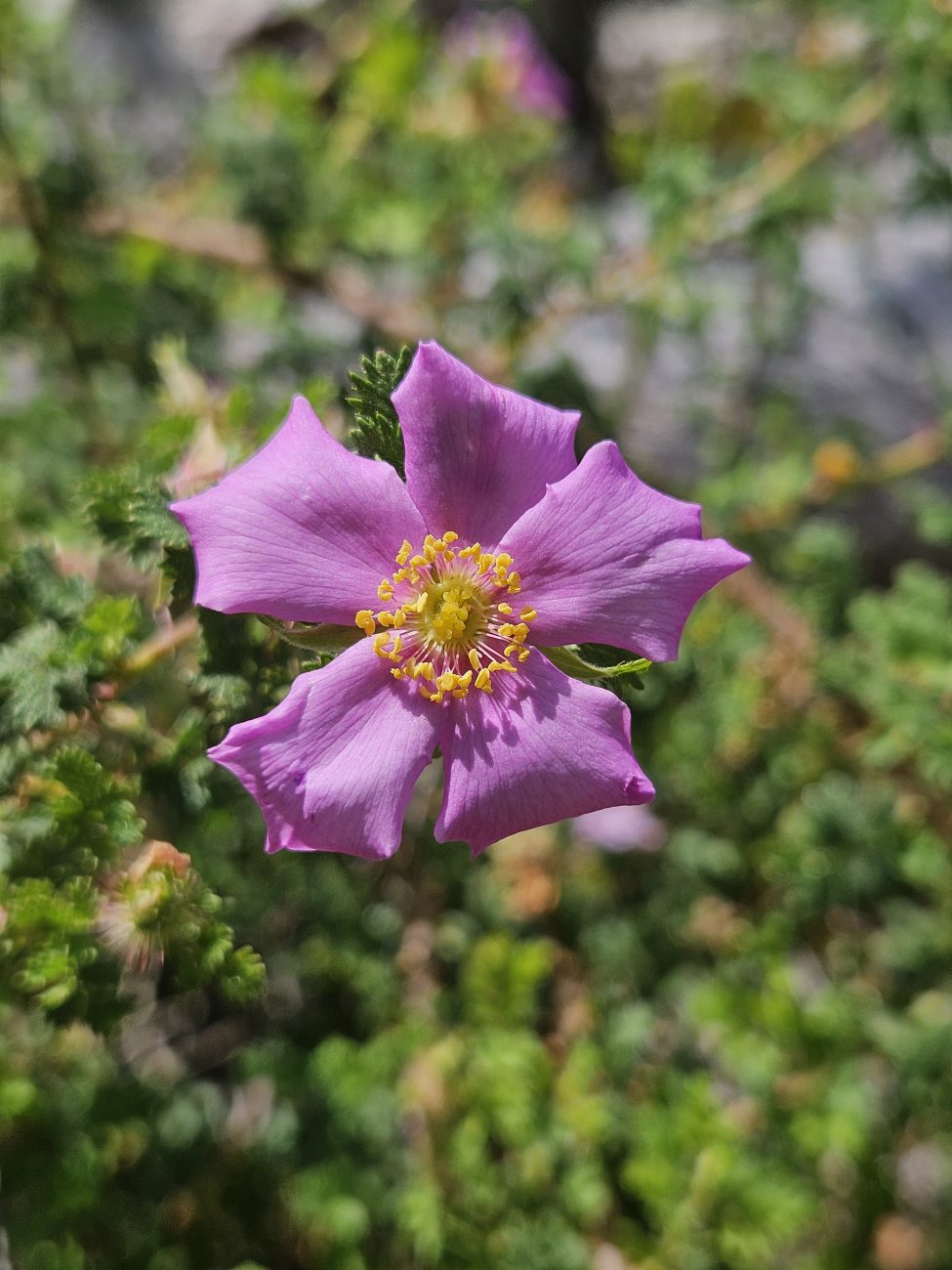
Rosa minutifolia
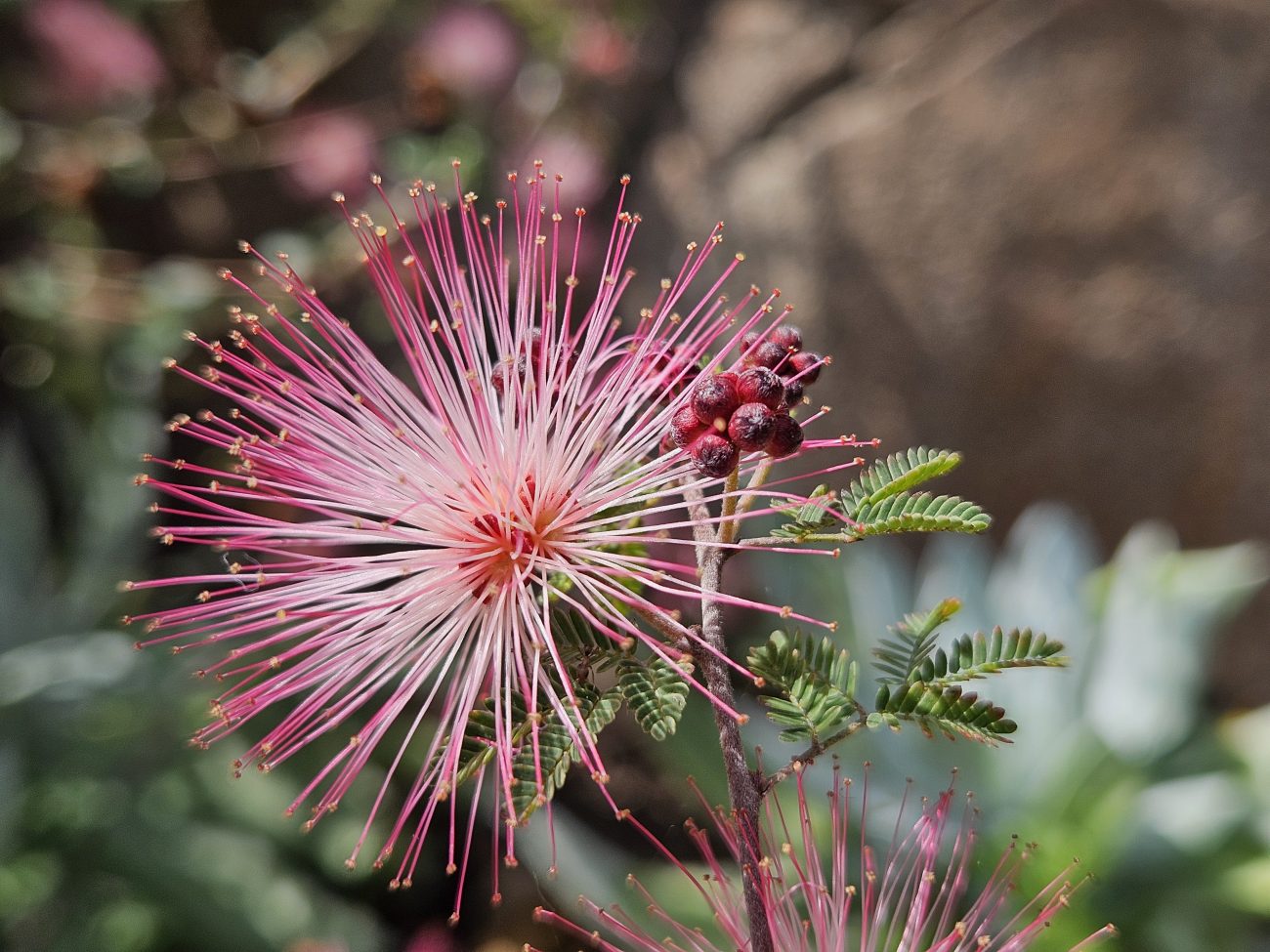
Calliandra eriophylla
30 March
The day began with a short journey from the accommodation in Bonita, San Diego to Cabrillo National Monument, located within Point Loma, San Diego. The visit to Cabrillo National Monument served two purposes. Firstly, it was one of only two places in San Diego where I could purchase the America The Beautiful Pass. This pass would allow me access to many of the National Parks I would be visiting on the trip and offer much better value for money than purchasing entry to each National Park separately. Secondly, the dominant vegetation type in Point Loma is Coastal Sage Scrub. This visit served as my first visit to natural Coastal Sage Scrub, and was very characteristic, as being a protected area, the area had been well preserved and non-native invasive species removed where possible. A few hours were spent botanising here.
I then headed north through Torrey Pines State Natural Reserve, named after the rare pine tree species Pinus torreyana endemic to California and growing only in coastal San Diego County and on Santa Rosa Island, offshore from Santa Barbara. Due to time constraints, I did not have long here to botanise but did have a very quick walk along the coast.
The afternoon was spent at San Diego Botanic Garden, located in Encinitas, exploring mostly their native plant and Cacti and succulent displays, before checking into a nearby motel for the night.
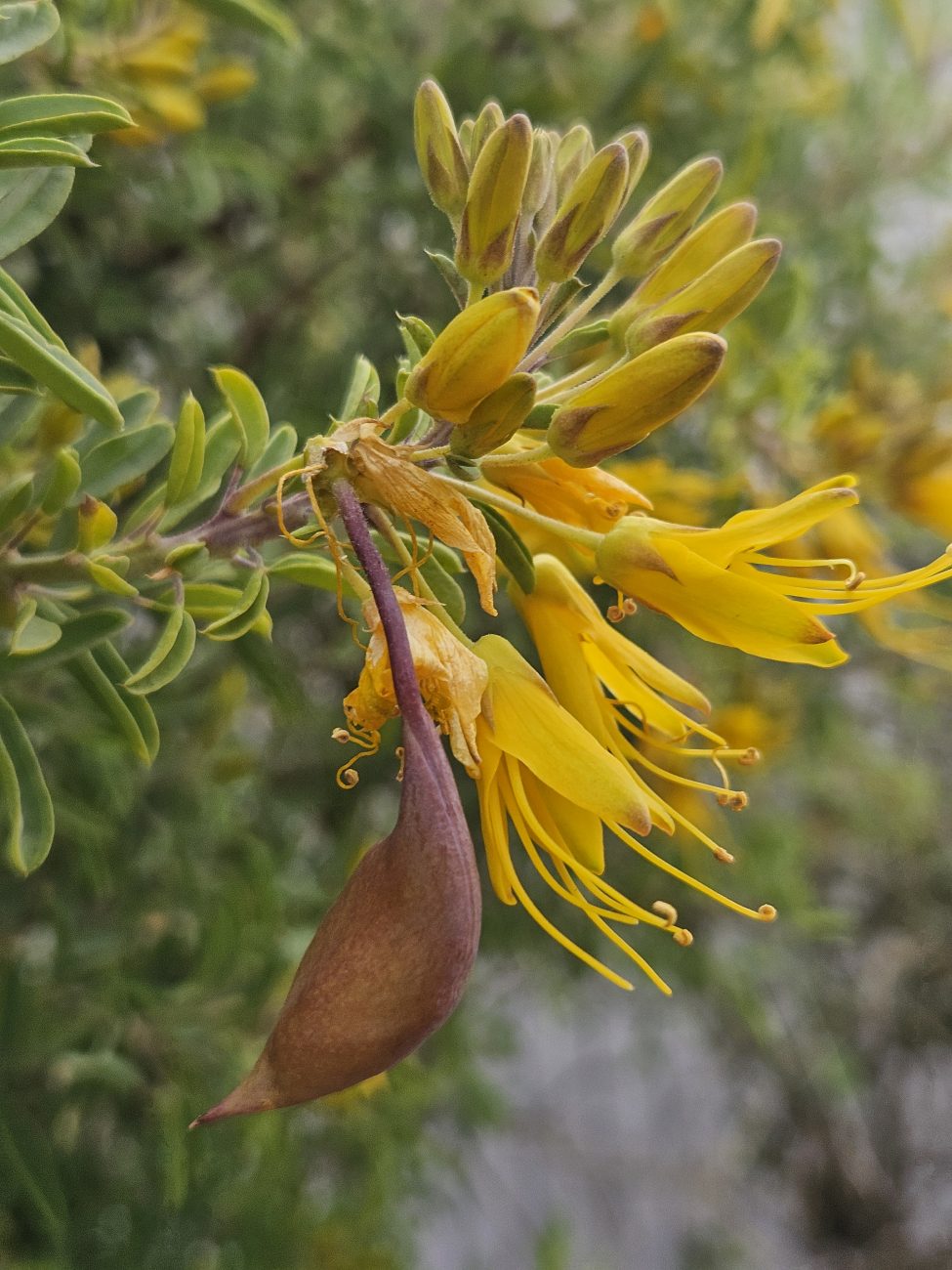
Cleomella arborea
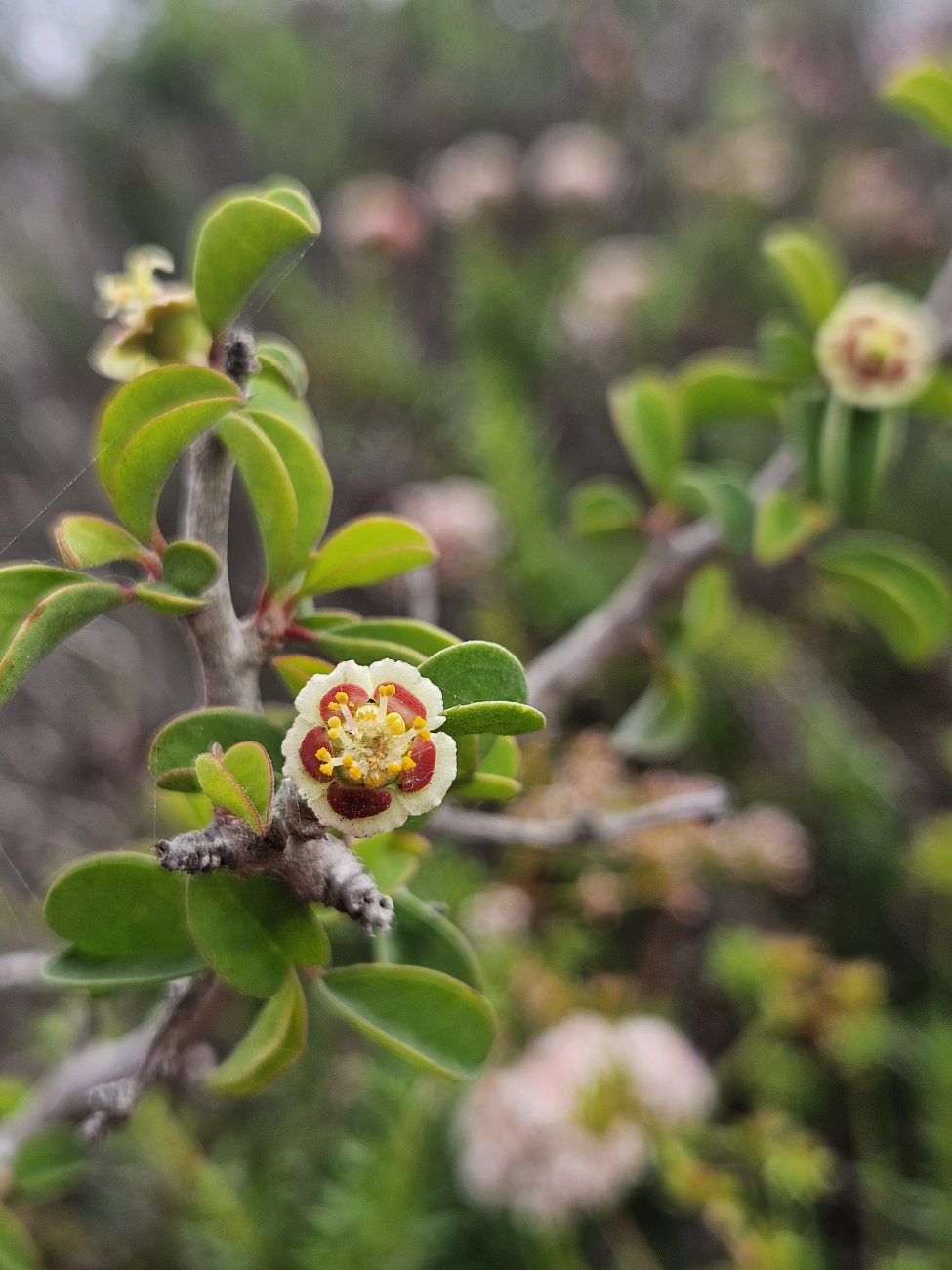
Euphorbia misera
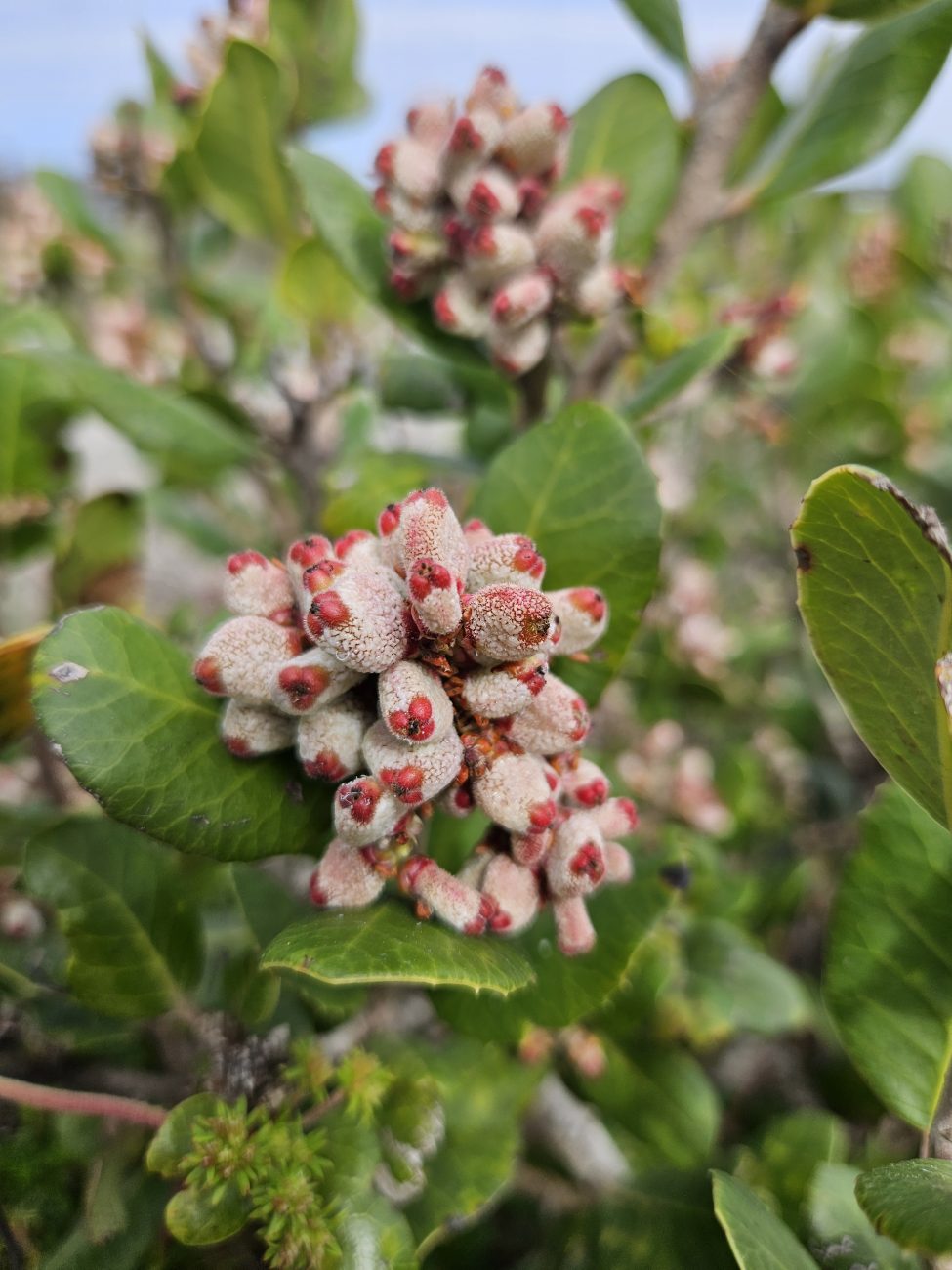
Rhus integrifolia
31 March
After leaving the motel I headed a few hours north from Encinitas to Riverside. Here I spent the morning exploring California Citrus State Historic Park and looking at all the different species and cultivars grown here. I had arrived in Riverside a little late in the year for the peak harvesting time for the majority of Citrus fruits, which typically runs from December to March. Despite this, there were plenty of fruits left on the trees for me to appreciate and discover. I had however arrived in Riverside at peak Citrus flowering time, and the air was thick with the sweet aroma of the white citrus flowers.
After leaving California Citrus State Historic Park, I headed across Riverside, stopping briefly for lunch and to visit the original Washington Navel Orange Tree. I then arrived at the University of California, Givaudan Citrus Variety Collection. I was shown around the Citrus Variety Collection, talking about their cultivation, their parentage and ancestors, and their characteristics. One of the best ways to do this of course was to pick the fruit, open them up and taste as many of the citrus as possible.
I left the collection late afternoon and headed to Palm Springs where I checked into a new motel. An evening walk on the outskirts of town provided another small opportunity to botanise before dark.
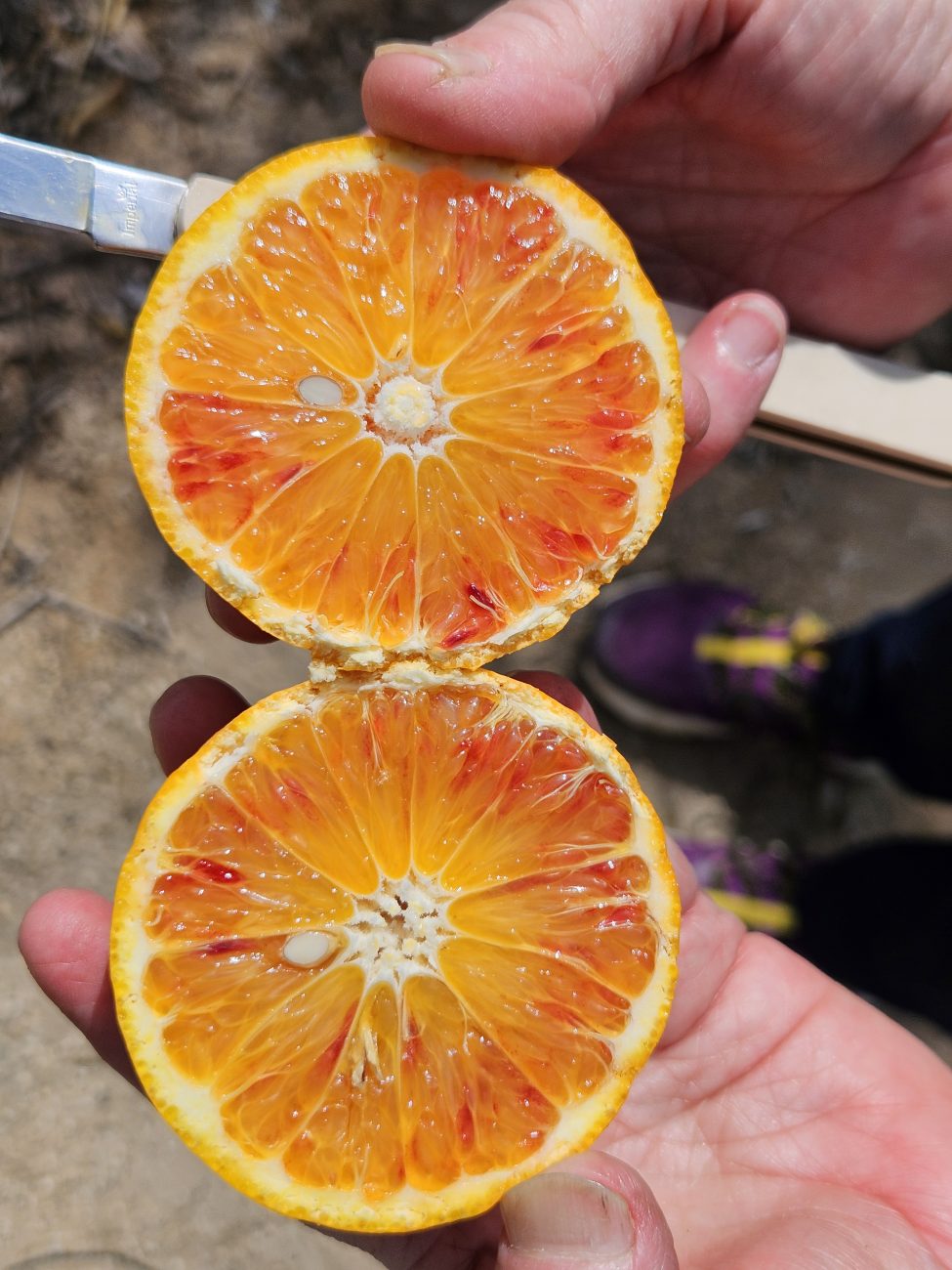
Washington Sanguine blood orange

Citrus maxima ‘Siamese acidless’
1 April
After pancakes in IHOP for breakfast, I headed south-east from Palm Springs to the southern entrance to Joshua Tree National Park. Once inside Joshua Tree, I drove north, stopping frequently at the side of the road to botanise, before arriving at my first planned stop at Queen Valley Road.
After leaving Queen Valley Road, I headed further north to the Fortynine Palms Oasis trailhead. Given the amount of time spent stopping and botanising at the roadside and at Queen Valley Road, and the time required to complete the round trip hike to the Oasis itself, I decided to concentrate on botanising well on the rocky slopes surrounding the first few hundred meters or so of the trailhead itself rather than try to complete the round trip to the oasis and risk being caught out in darkness. This proved to be a sensible decision as darkness crept up quickly in the desert and some beautiful cacti, succulent and drought tolerant plants were observed.
I then headed to Twentynine Palms to check into a new motel.
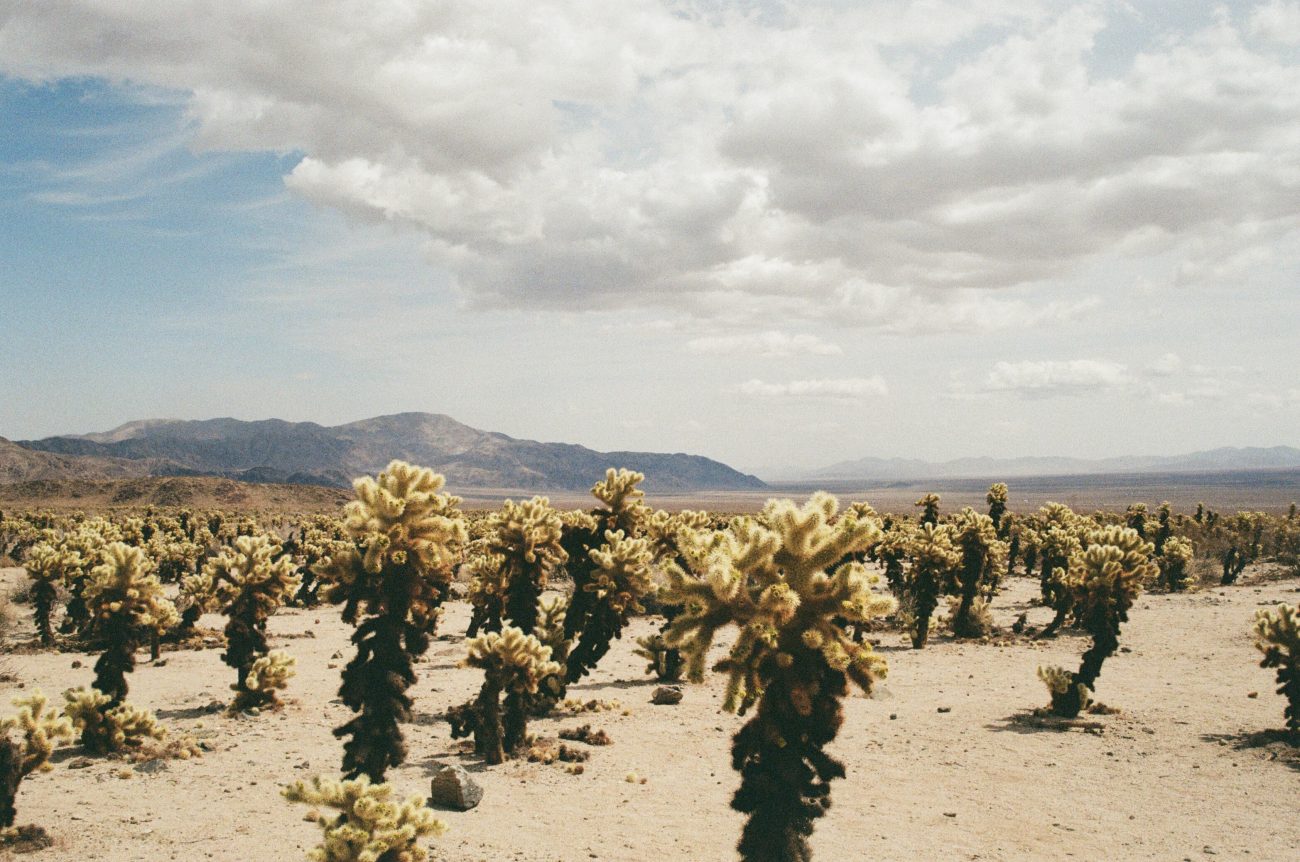
Cylindropuntia bigelovii in Pinto Basin, Joshua Tree

Ferocactus cylindraceus

Pelecyphora alversonii
2 April
I headed north from Twentynine Palms and hit the old Route 66. After a short drive, I came across the remains of an old ghost town called Bagdad where a single Tamarix ramosissima along with a few wooden crosses marking graves was all that remained.
A few minutes’ drive later and I came across Amboy Crater where only a few species of plant grew amongst the black volcanic rock, due to the unusually dry winter meaning the usual spring displays of wildflowers were non-existent.
After turning off Route 66 onto Kelbaker Road, I botanised the roadside periodically before finally reaching the Kelso Sand Dunes, deep inside the heart of the Mojave Desert where I spent an hour or so botanising.
After leaving Kelso Sand Dunes I headed further north along Kelbaker Road, stopping to botanise at some limestone outcrops I came across.
Again, I returned to Kelbaker Road and continued north. The desert treated me to a spectacular evening light show as I neared my destination for the evening, Shoshone, where I checked into a new motel for the evening, before taking a dip in the hotels naturally hot spring fed pool which runs at a constant temperature of 40.6˚C.
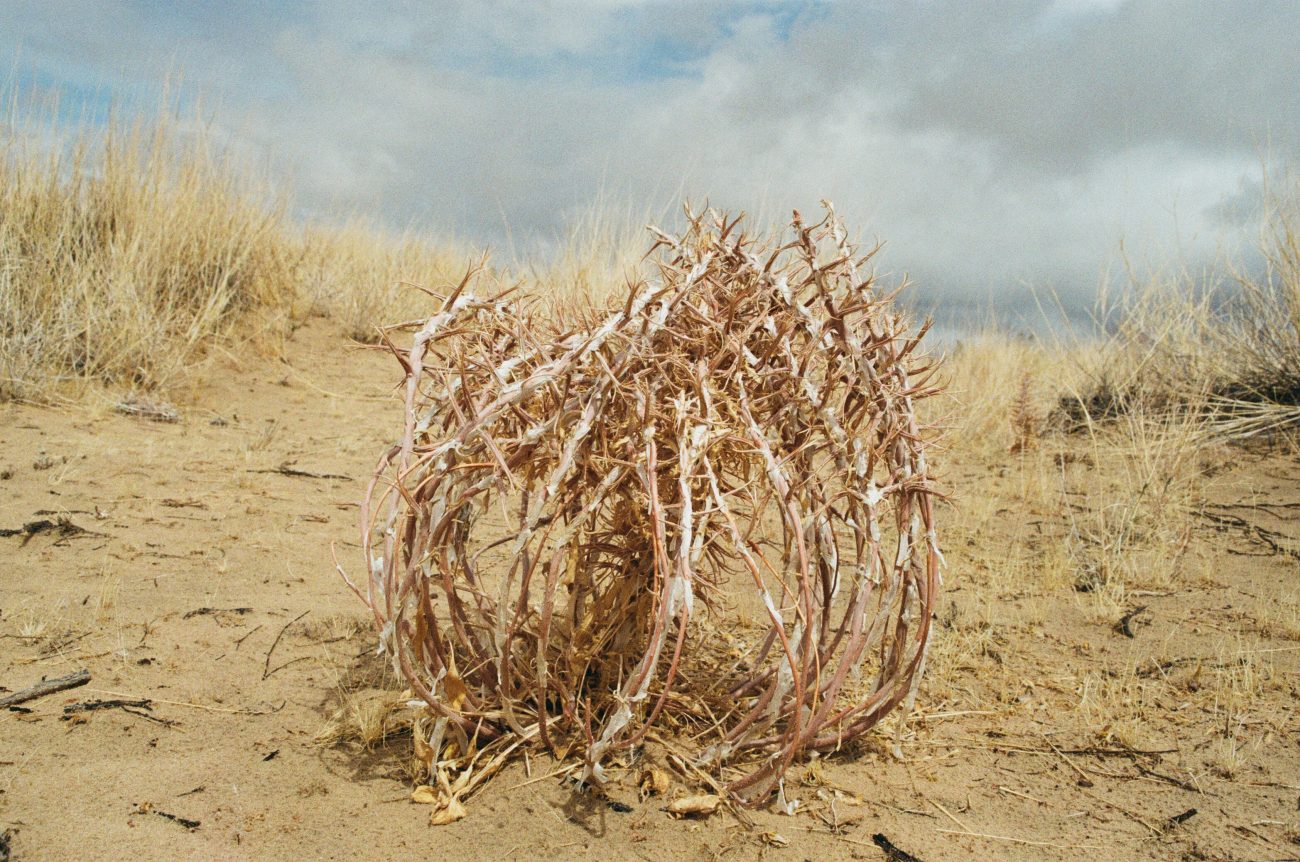
Oenothera deltoides in Kelso Sand Dunes
3 April
I started the morning with a walk around town of Shoshone. Interestingly, despite being in the Mojave Desert between the Mojave National Preserve and Death Valley, water is comparatively abundant in the town due to the presence of natural thermal springs and the Amargosa River which, despite running below ground for the majority of its run, surfaces briefly at Shoshone. The walk started at the pupfish pond where a sub species of the Amargosa pupfish, Cyprinodon nevadensis subsp. shoshone, is endemic to after previously being declared extinct before its re-discovery in 1986. I then walked around Shoshone cemetery before heading to the banks of the Amargosa River and the wetlands surrounding it, where I was treated to a sighting of a roadrunner. I then set off in the car and, after a very quick detour to the border with Nevada, headed to Dantes View where I botanised briefly. After leaving Dantes View, I stopped briefly at Zabriskie Point before continuing on to Furnace Creek, where the hottest air temperature on earth was ever recorded. After stopping here for lunch, I headed on to the Devils Cornfield, Mesquite Flat Sand Dunes and Towne Pass to botanise. A quick diversion to see Swansea, an abandoned sliver mining ghost town, before heading on to my accommodation in Kernville.
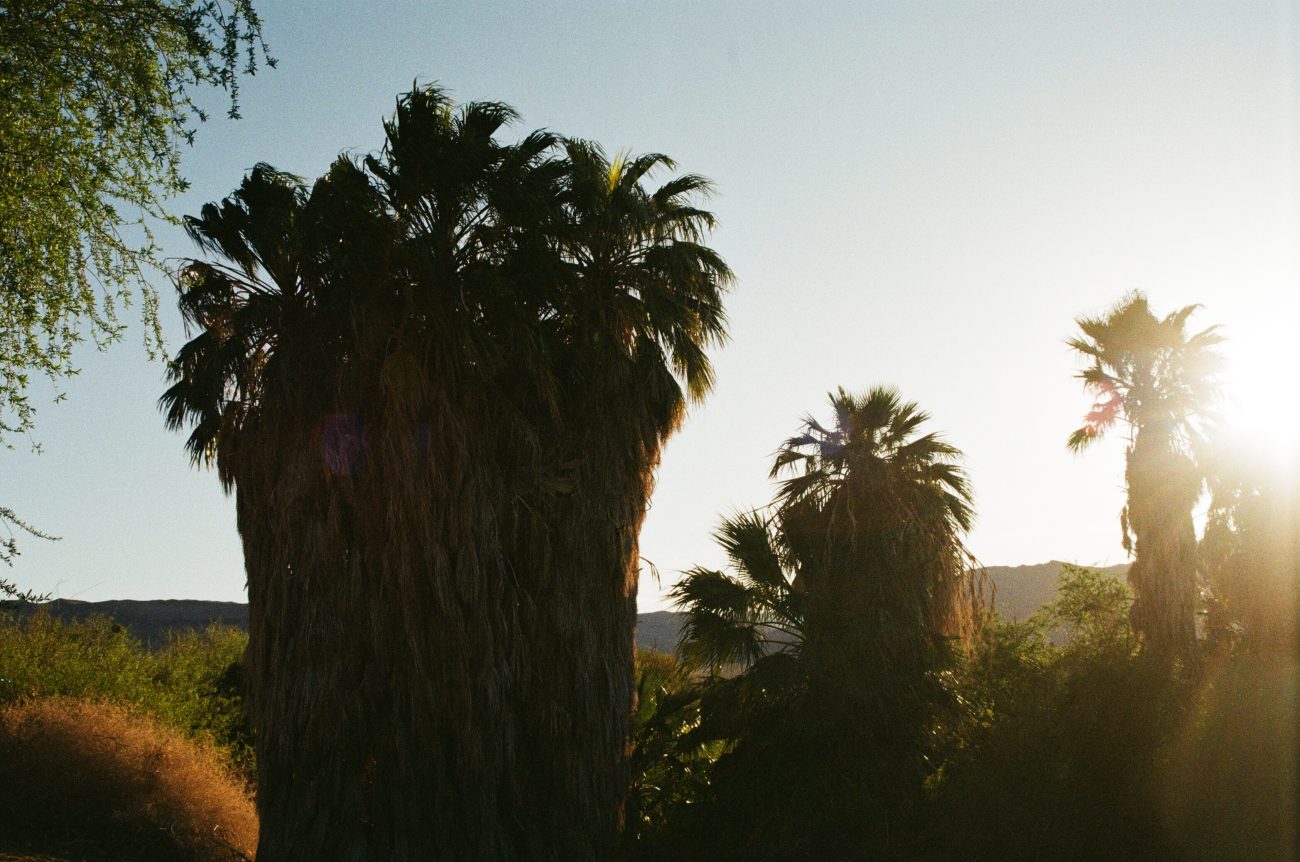
Washingtonia filifera in Shoshone
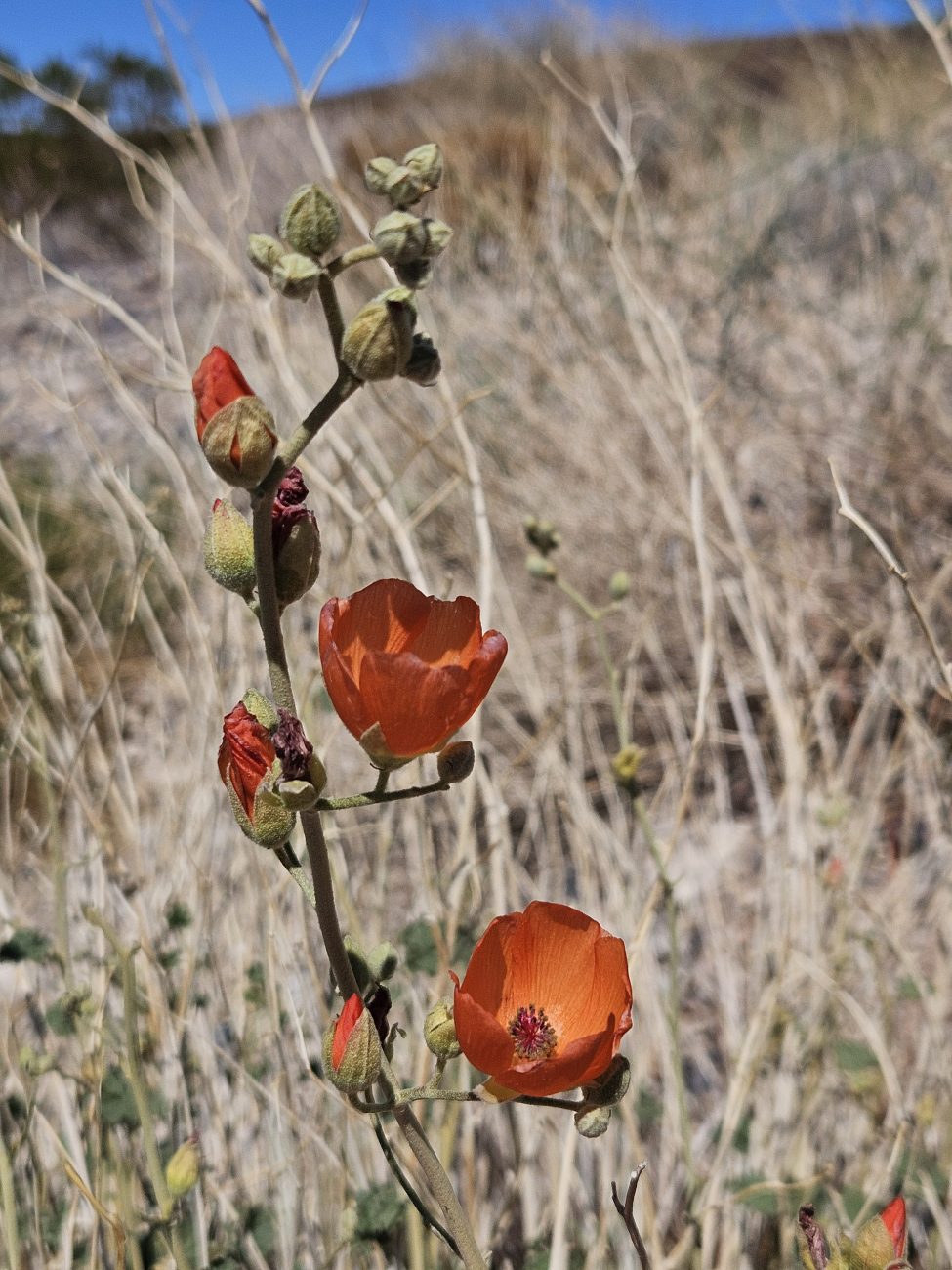
Sphaeralcea ambigua
4 April
The day started with a long drive to Three Rivers, where I met with Melanie Keeley, the owner of Alta Vista Native Plant Nursery and Sylvia Haultain, an ecologist at the National Park Service. Melanie gave me a tour of her native plant nursery before Sylvia took me in her car to the trailhead at Hospital Rock in the foothills of the Sierra Nevada mountains where we botanised together. Sylvia then took me to see the Giant Redwood forests in Sequoia National Park where we saw the General Sherman Tree, a Sequoiadendron giganteum which is the biggest tree in the world in terms of mass. At this altitude snow blanketed the ground with only large shrubs and trees visible. On the way back to Three Rivers to collect my hire car, we botanised occasionally in the foothills as we headed lower in elevation. After collecting my car I headed to Pinehurst to check in to the new accommodation.
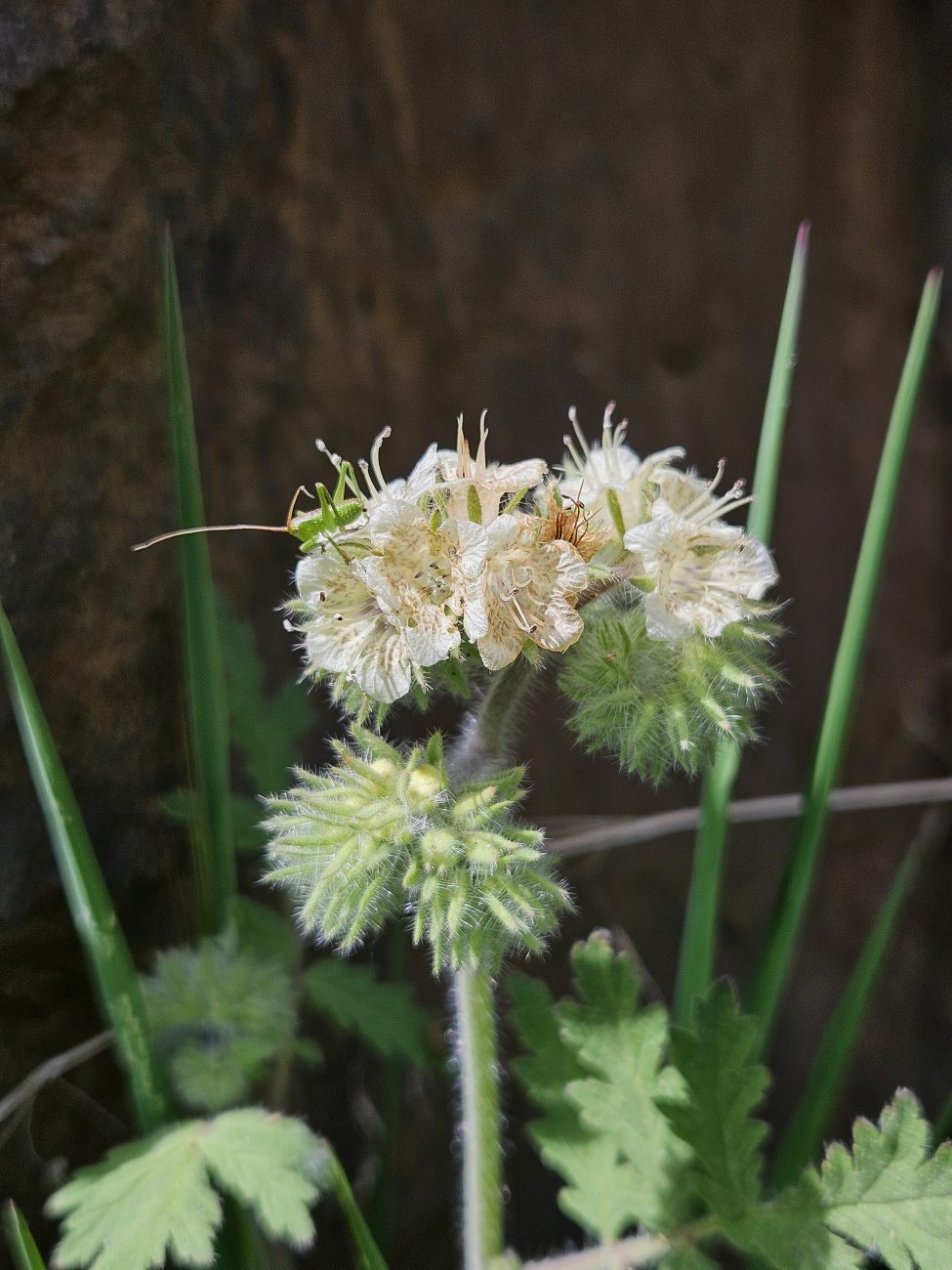
Phacelia cicutaria
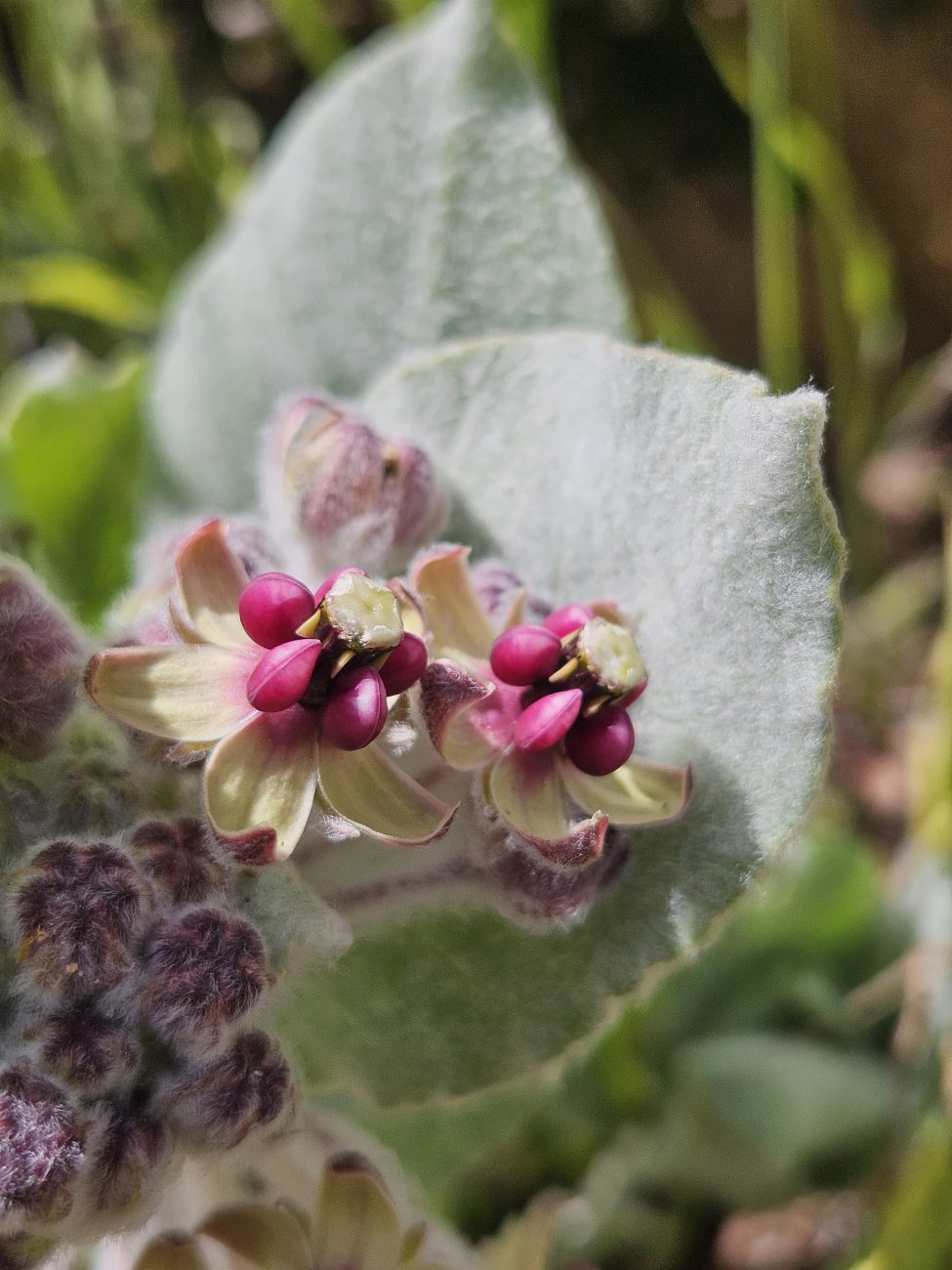
Asclepias californica
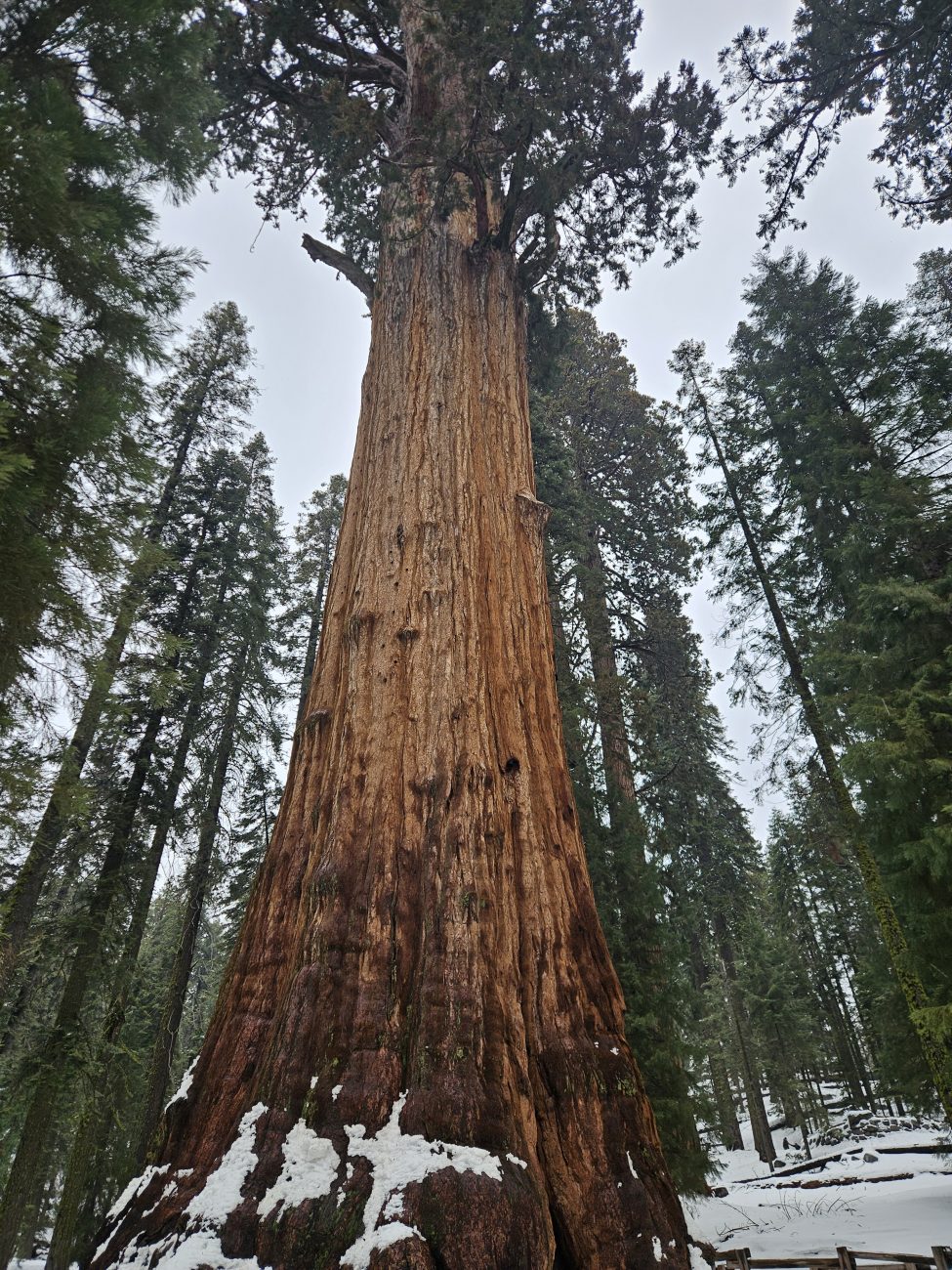
Sequoiadendron giganteum
5 April
After an early start and a long drive north, I arrived at Yosemite Valley in Yosemite National Park, where I spent the day walking and botanising along trails such as Bridalveil waterfalls trail, Cooks Meadow, Lower Yosemite Falls Trail and El Capitan Meadow. I was slightly early in the year for the peak wildflower blooms in Yosemite as, given its higher altitude, snow thaw was only just occurring. After a day botanising in Yosemite Valley and along the Merced River, I headed to my accommodation
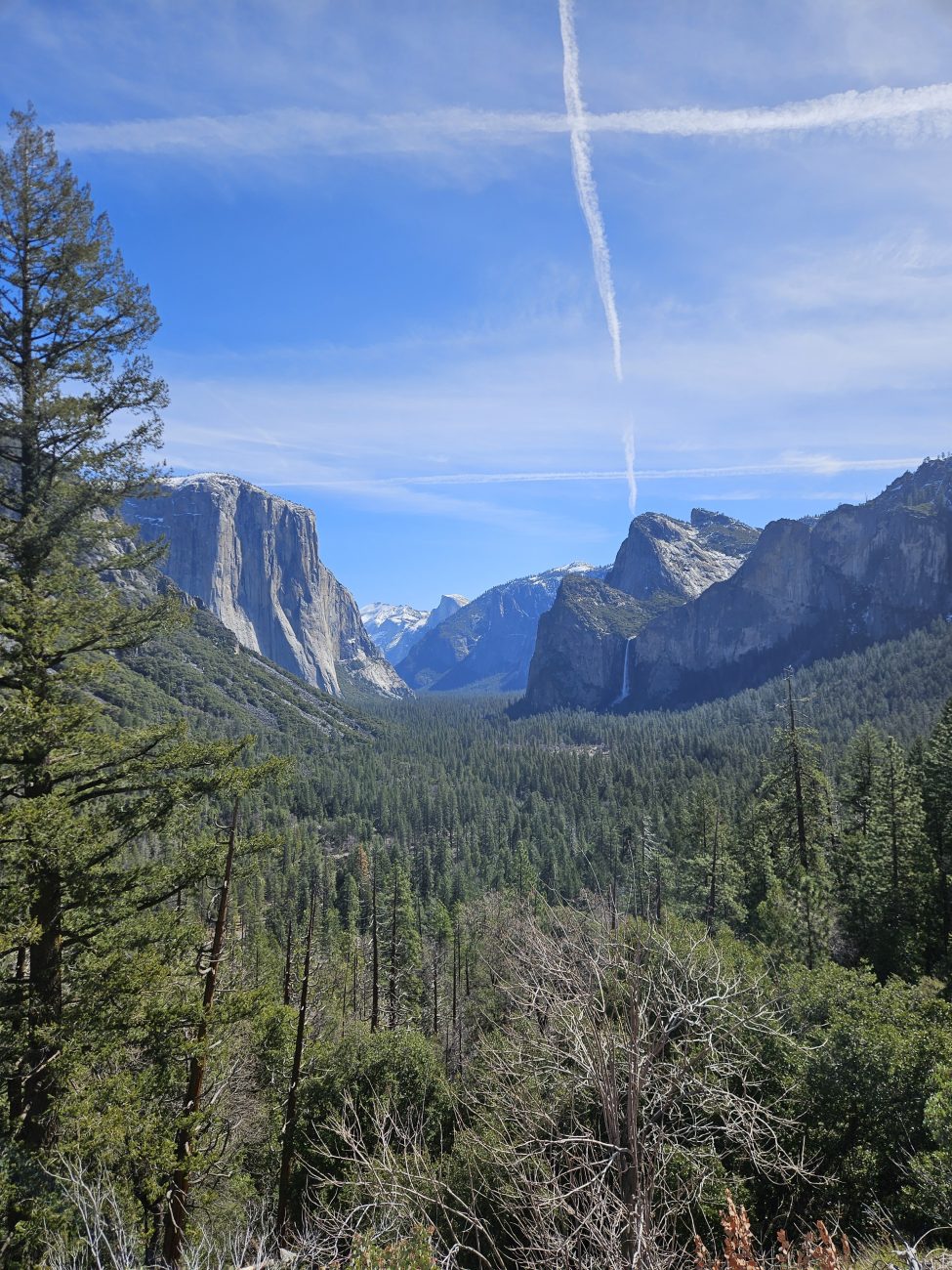
Yosemite Valley
6 April
The day was spent walking and botanising on the outskirts of Yosemite National Park on a trail called Hite Cove. This trail in the foothills was located at lower elevations than Yosemite Valley and was therefore further into peak wildflower flowering. After a long hike, I returned to my accommodation for my last night in Yosemite.
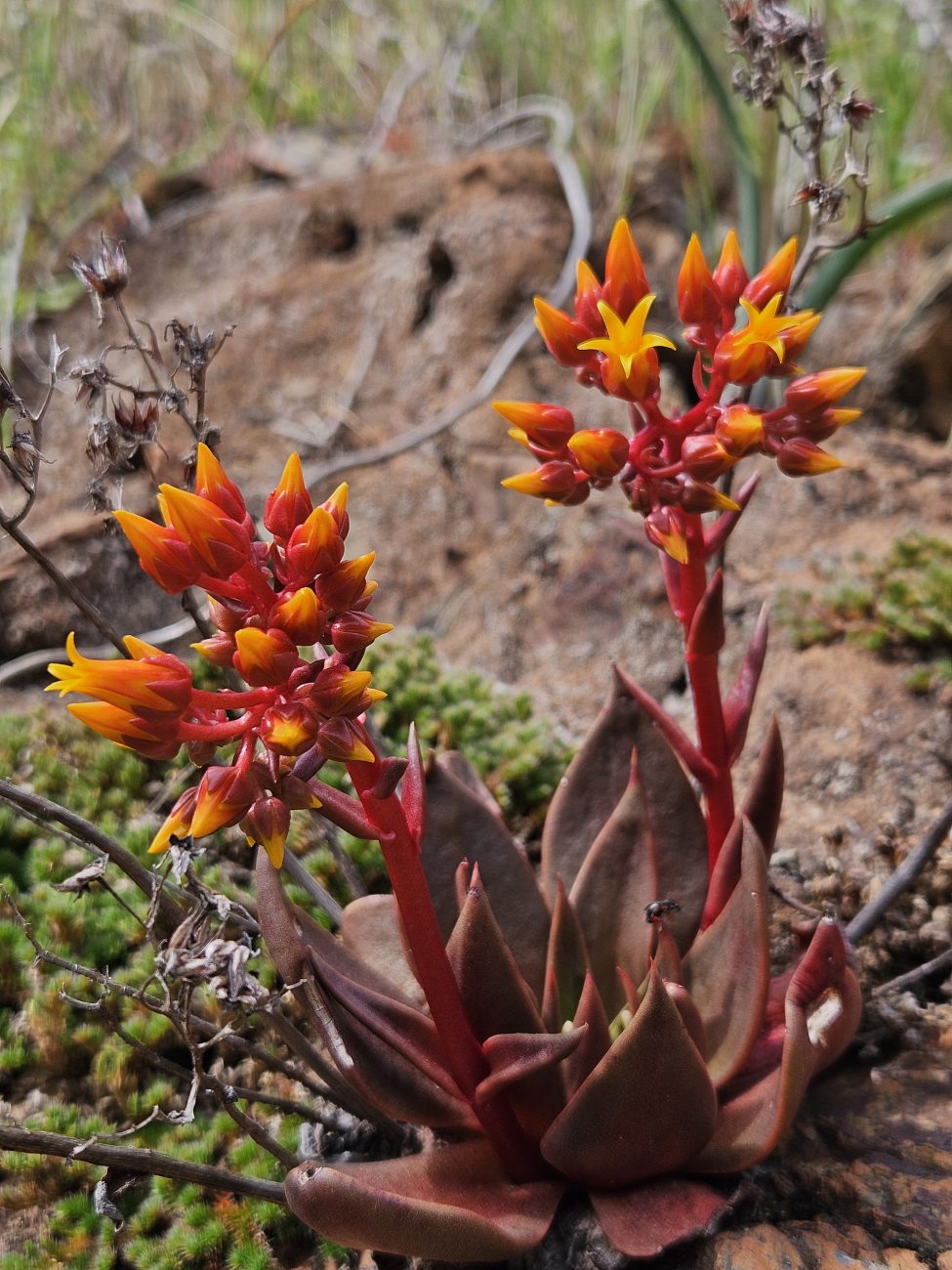
Dudleya cymosa
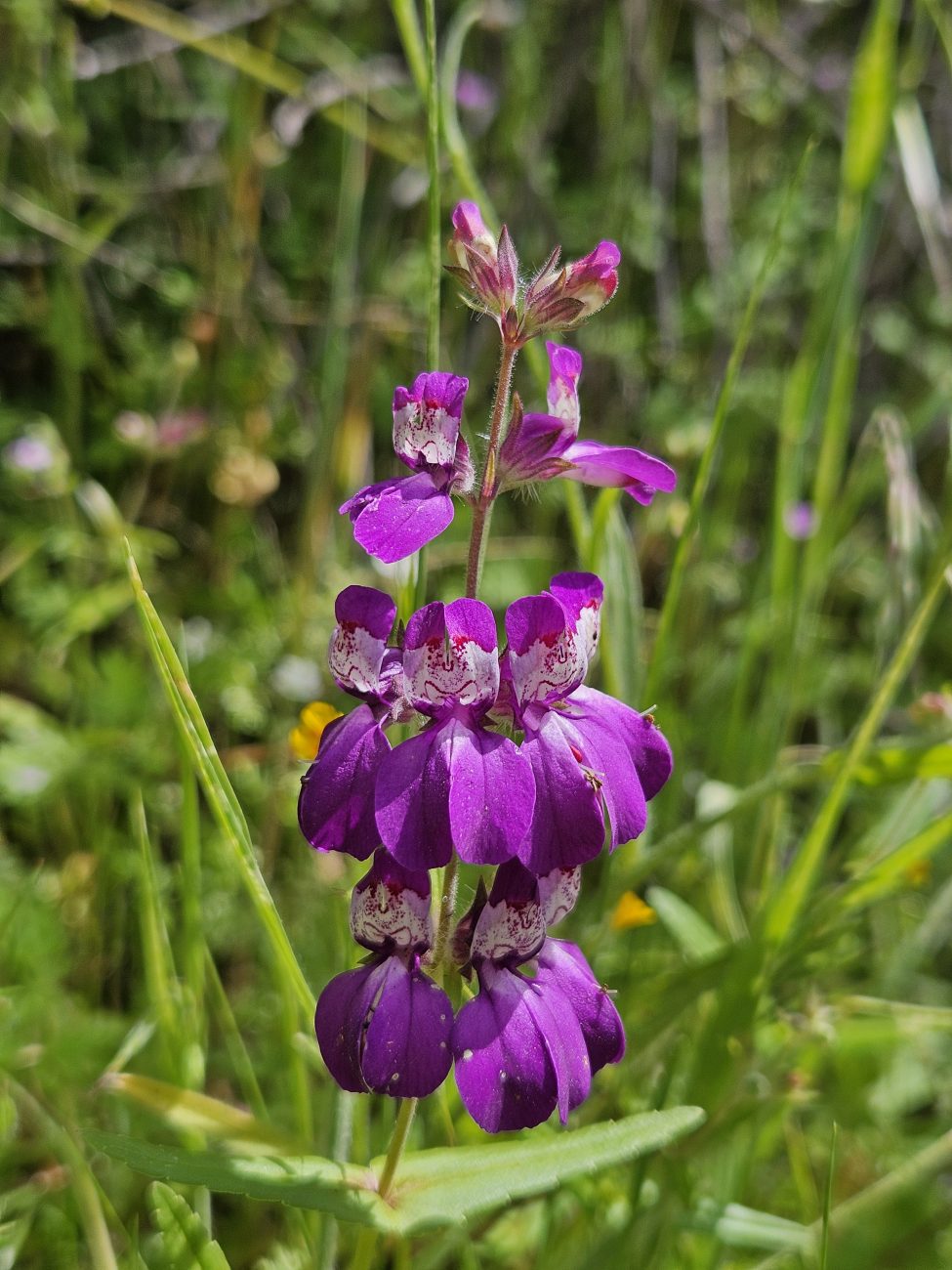
Collinsia heterophylla

Lupinus stiversii
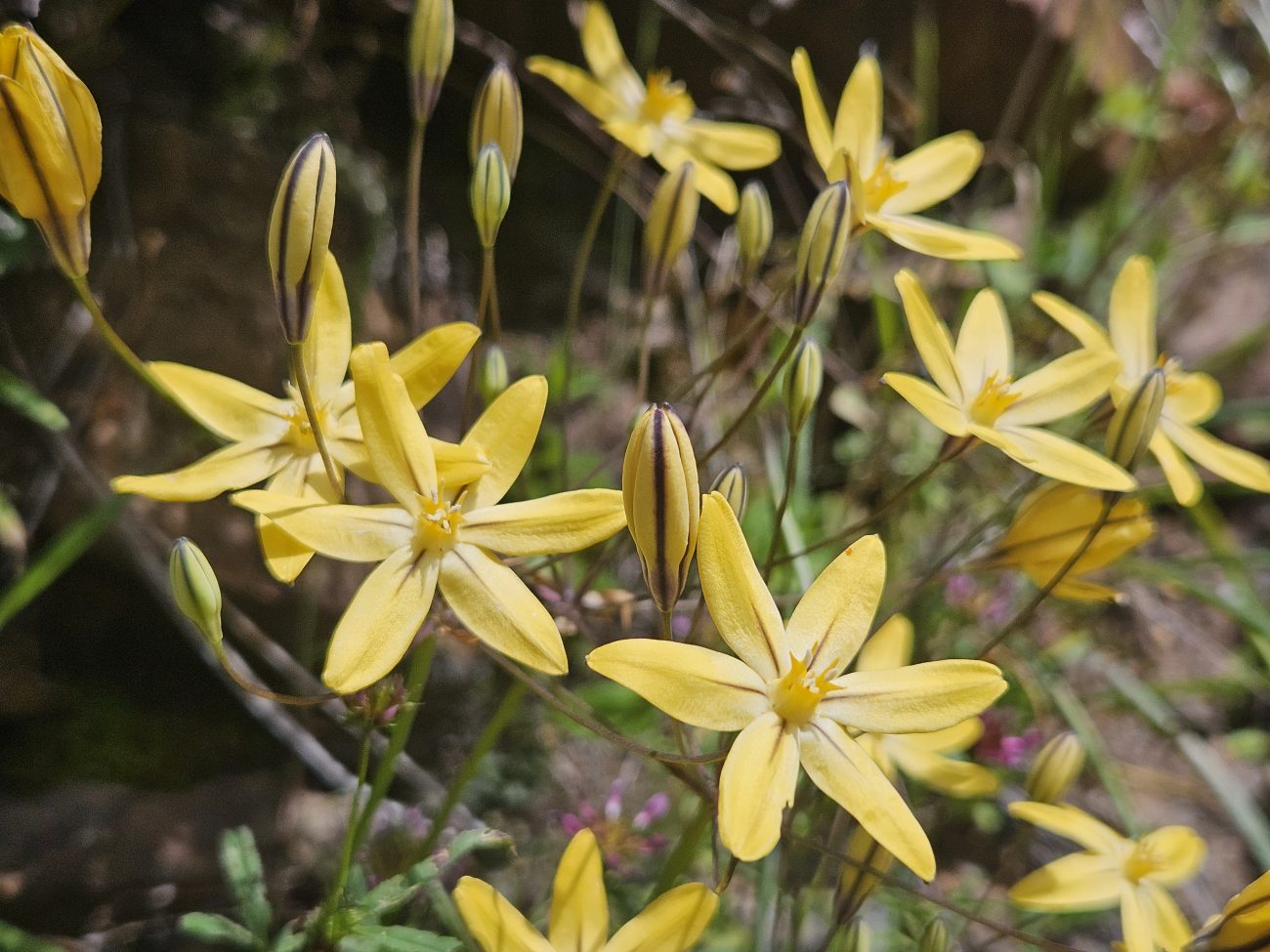
Triteleia ixioides
7 April
I left Yosemite early in the morning in order to have a short amount of time botanising the serpentine soils of the Red Hills before continuing my journey west. My time at the Red Hills was further limited by having to do a large amount of off-roading which slowed my journey considerably. Despite this I still managed to see some amazing plants before having to leave to drive to UC Botanic Garden Berkeley. Once I arrived at the garden I met Andrew S. Doran, Director of Collections, who showed me around the collections. After a few hours Andrew then took me to Tilden Regional Parks Botanic Garden where we met with the director, Bart O’Brien, who gave us a tour of the gardens and its collections. I then headed across Oakland Bay Bridge into San Francisco where I checked into my accommodation for the next few days.

Triphysaria eriantha
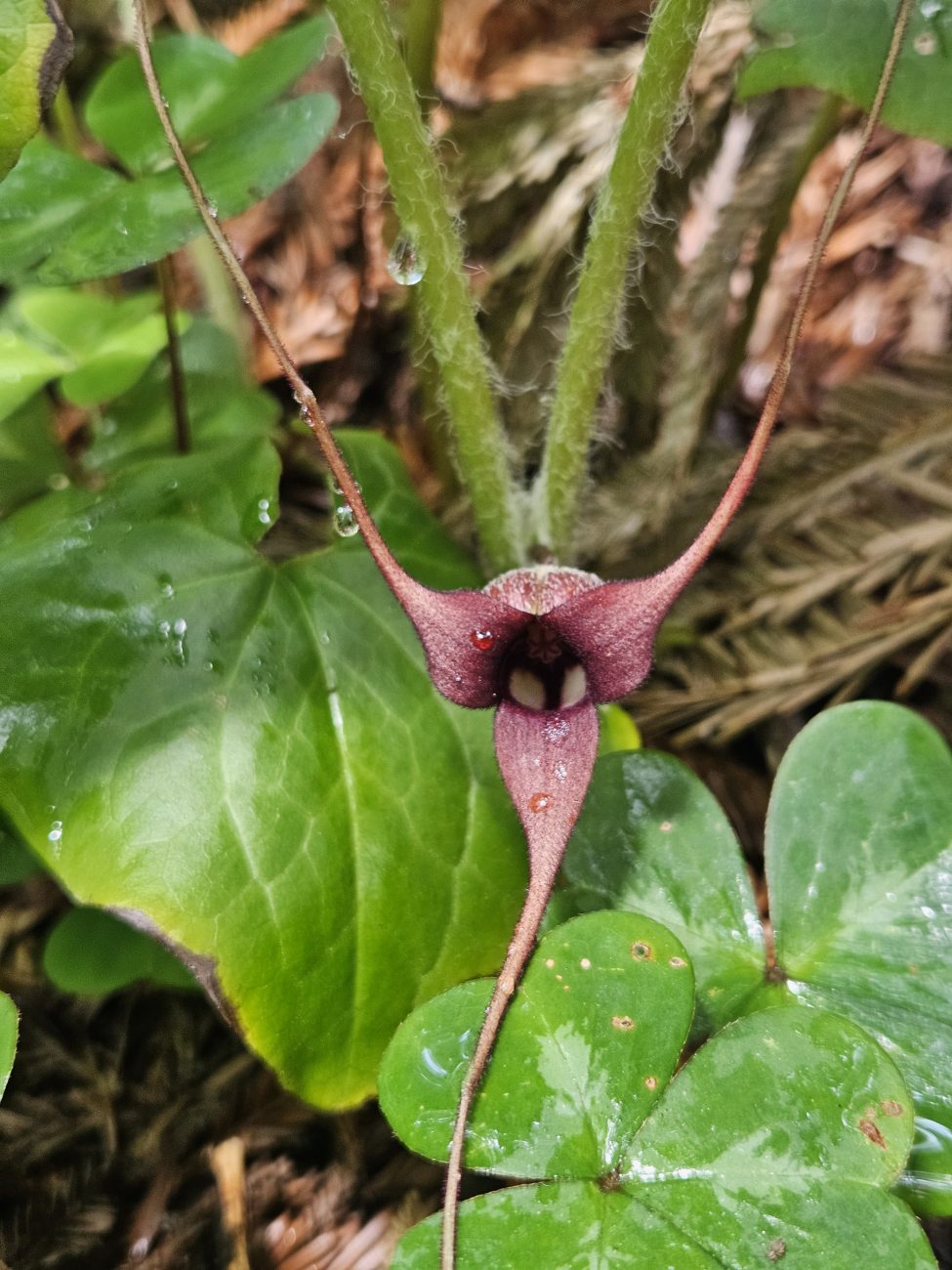
Asarum caudatum
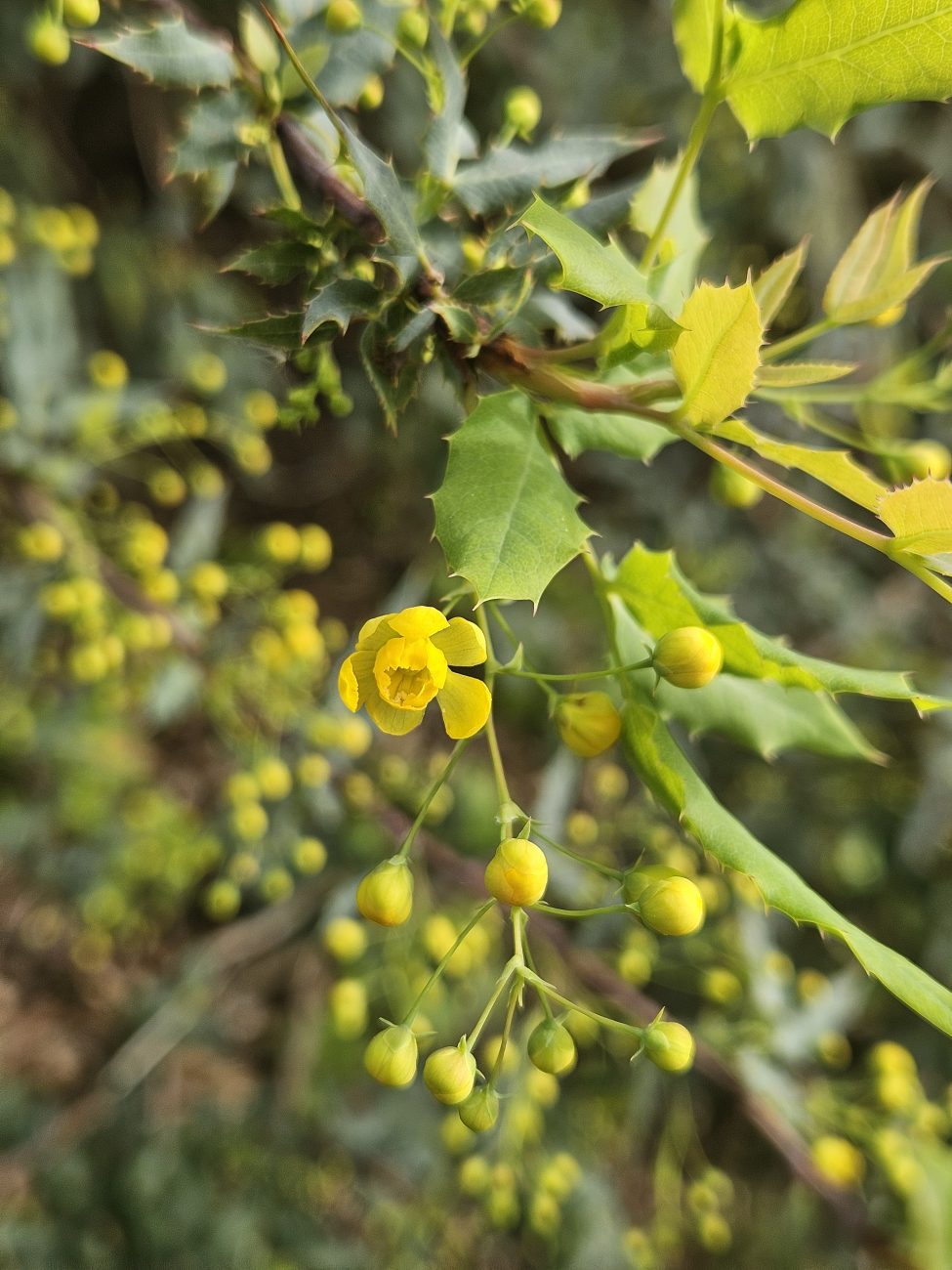
Berberis nevinii
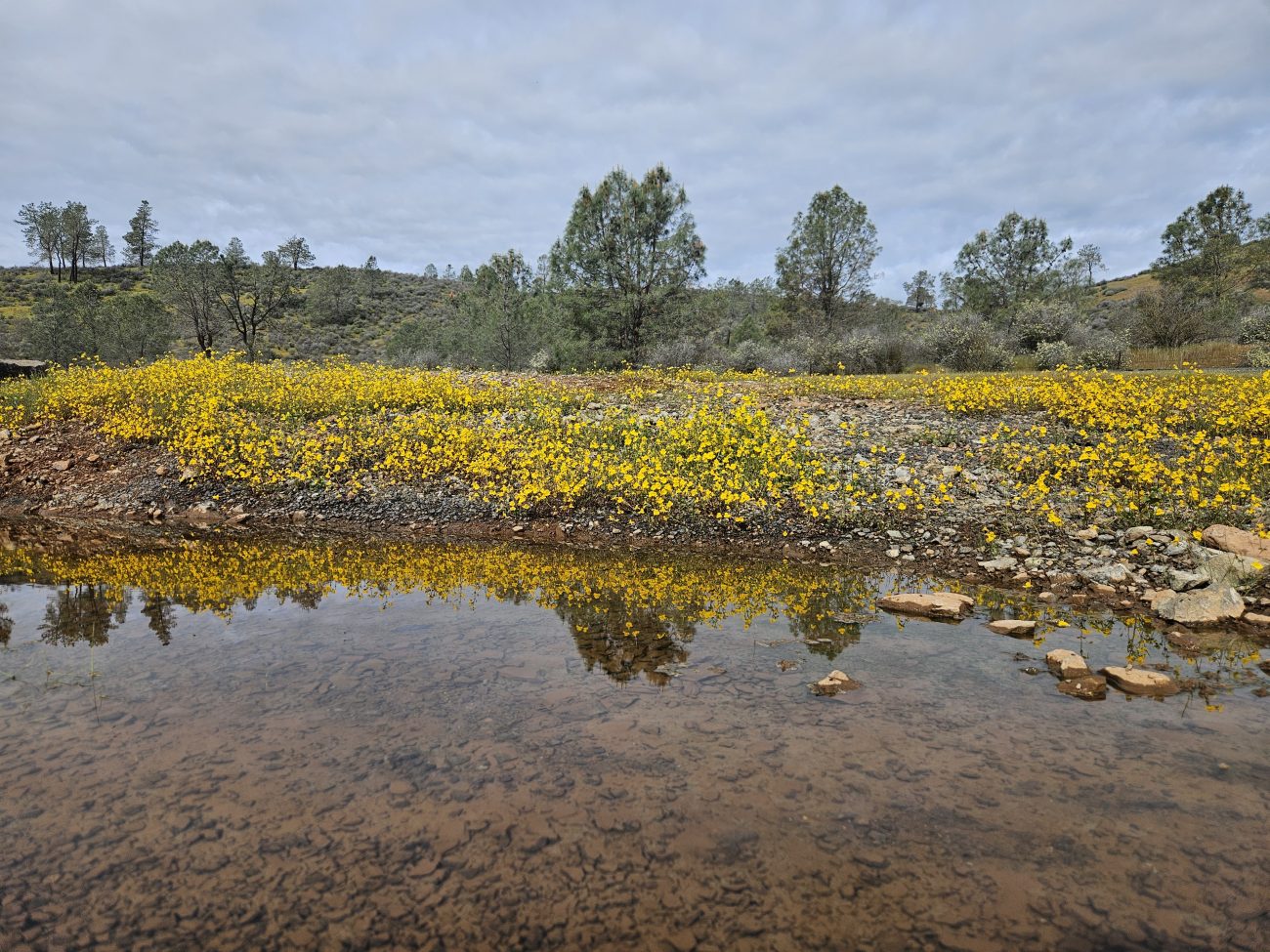
Erythranthe guttata
8 April
I began the day by visiting San Francisco Botanical Garden within Golden Gate Park, where I met with Joseph Rothleutner, Garden Director, who showed me around the collections. I also met with Ahmed Baradah, Californian native plant gardener, and Eli Feldman, nursery specialist, who talked with me about their areas of expertise. Towards the end of the day there was time for a quick visit to the Japanese Tea Garden, also one of the gardens of Golden Gate Park.
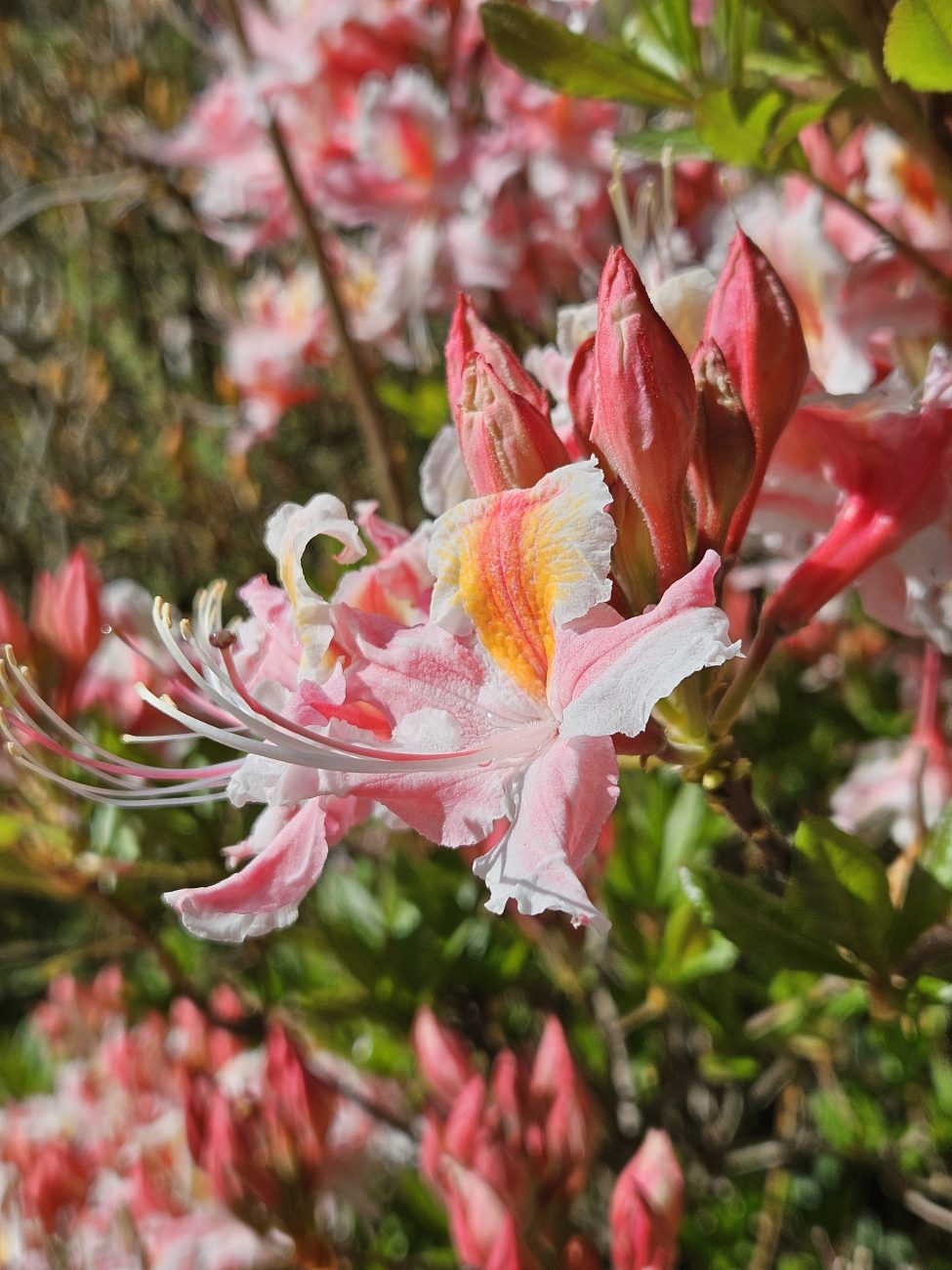
Rhododendron occidentale
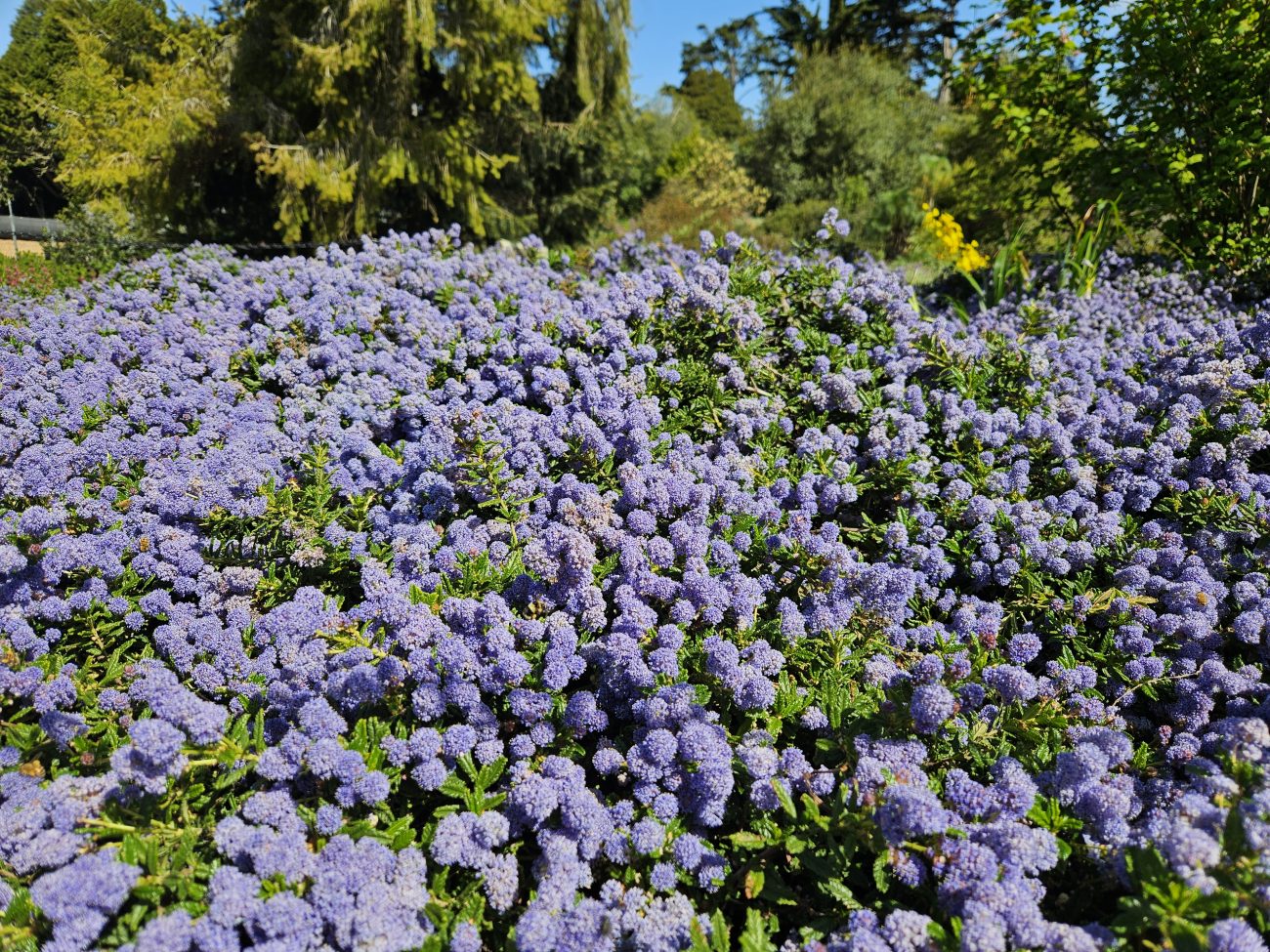
Ceanothus hearstiorum
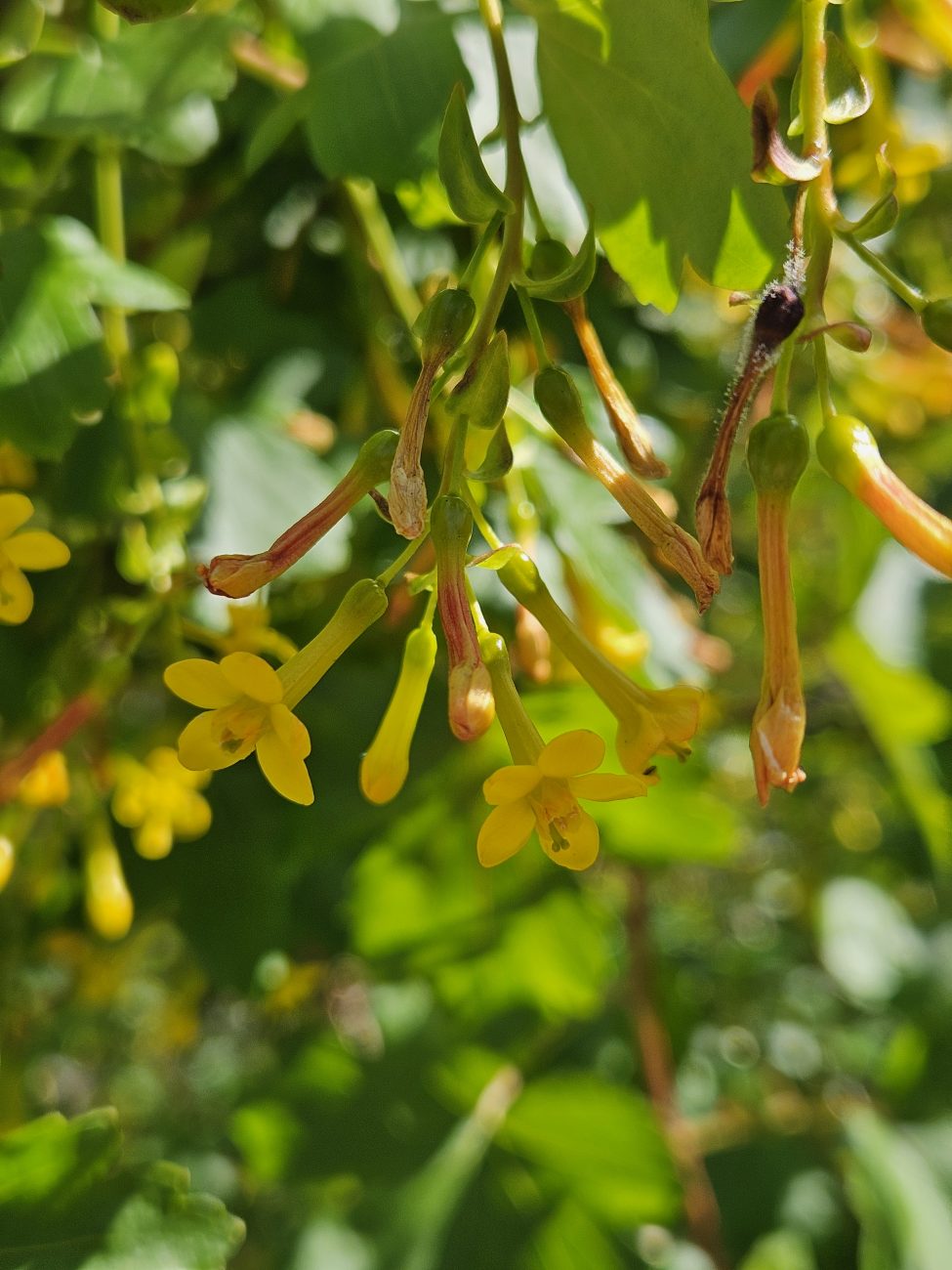
Ribes aureum var gracillimum
9 April
This day was spent going the furthest north that I would on my trip, across Golden Gate Bridge to Point Reyes National Seashore, where I spent the day botanising the trails across the area, including Chimney Rock, Drakes Beach, Point Reyes Beach North, Abbotts Lagoon, Pierce Point, Tomales Point, Limantour and the roadsides in between. On the way back to San Francisco, I stopped a couple of times on the outskirts of Samuel P. Taylor State Park and Roys Redwood Preserve to see some examples of the tallest trees in the world Sequoia sempervirens (coast redwood), before stopping a final time to take in the view of Golden Gate Bridge and San Francisco.

Lupinus arboreus
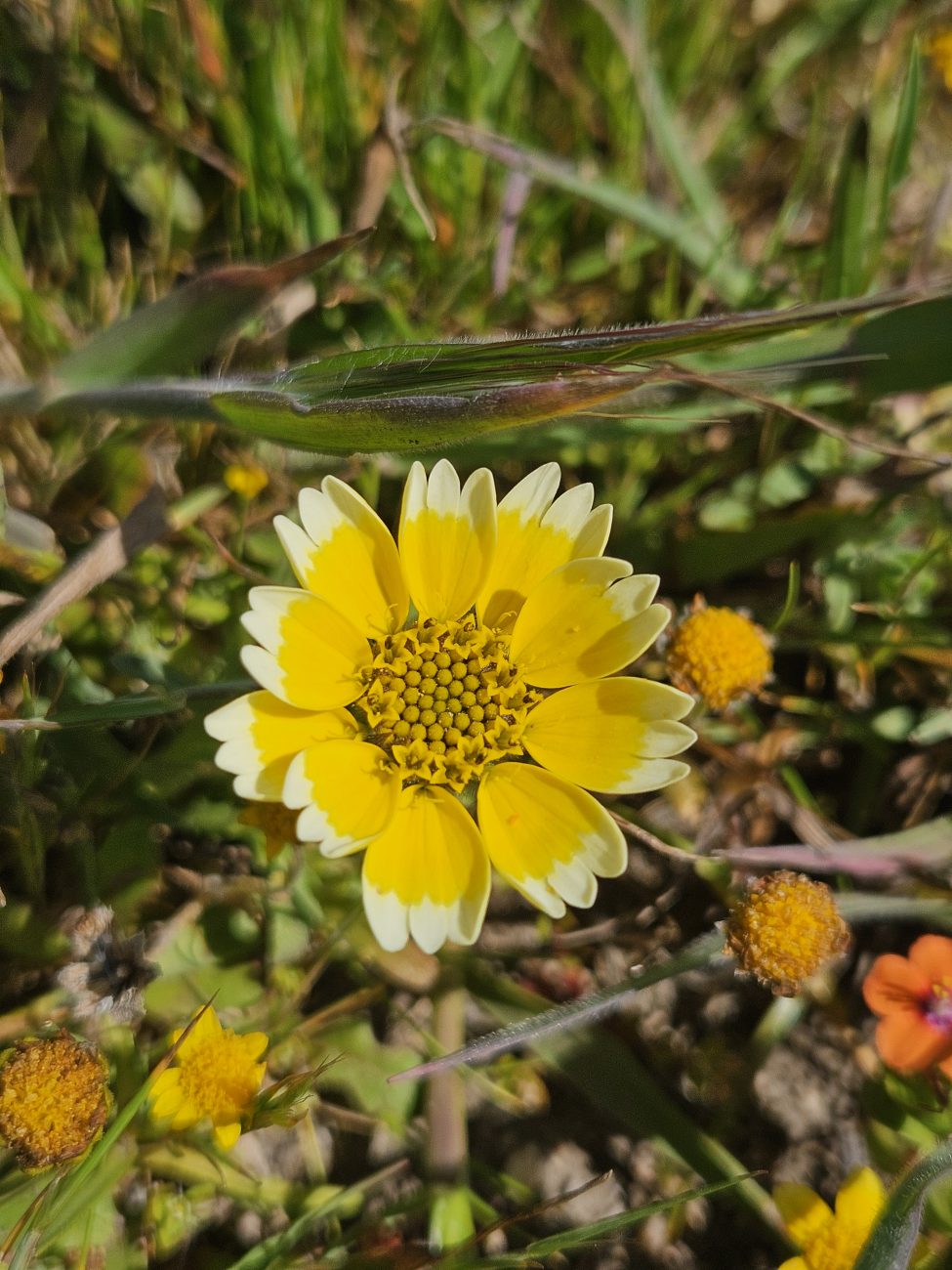
Layia platyglossa
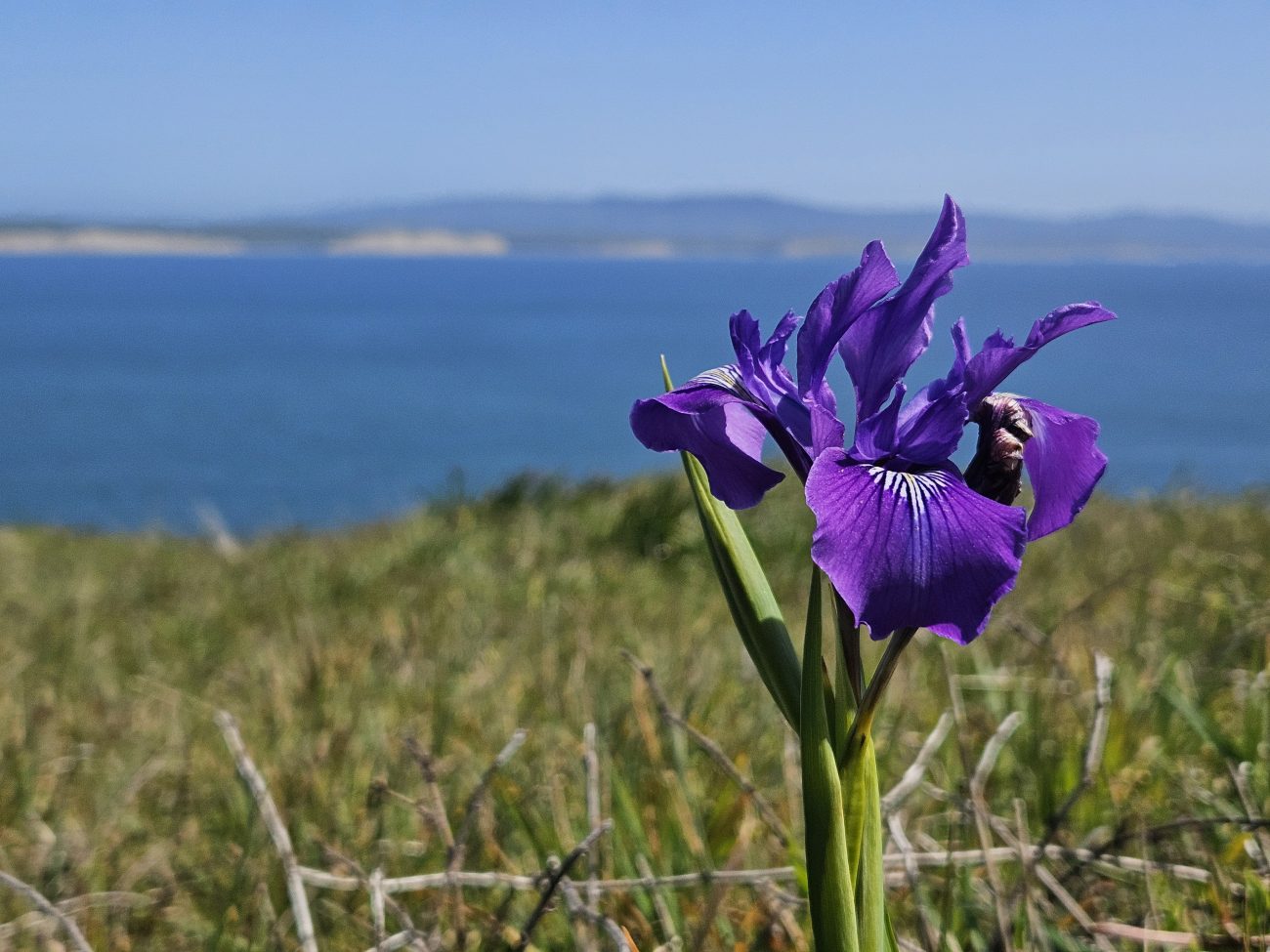
Iris douglasiana
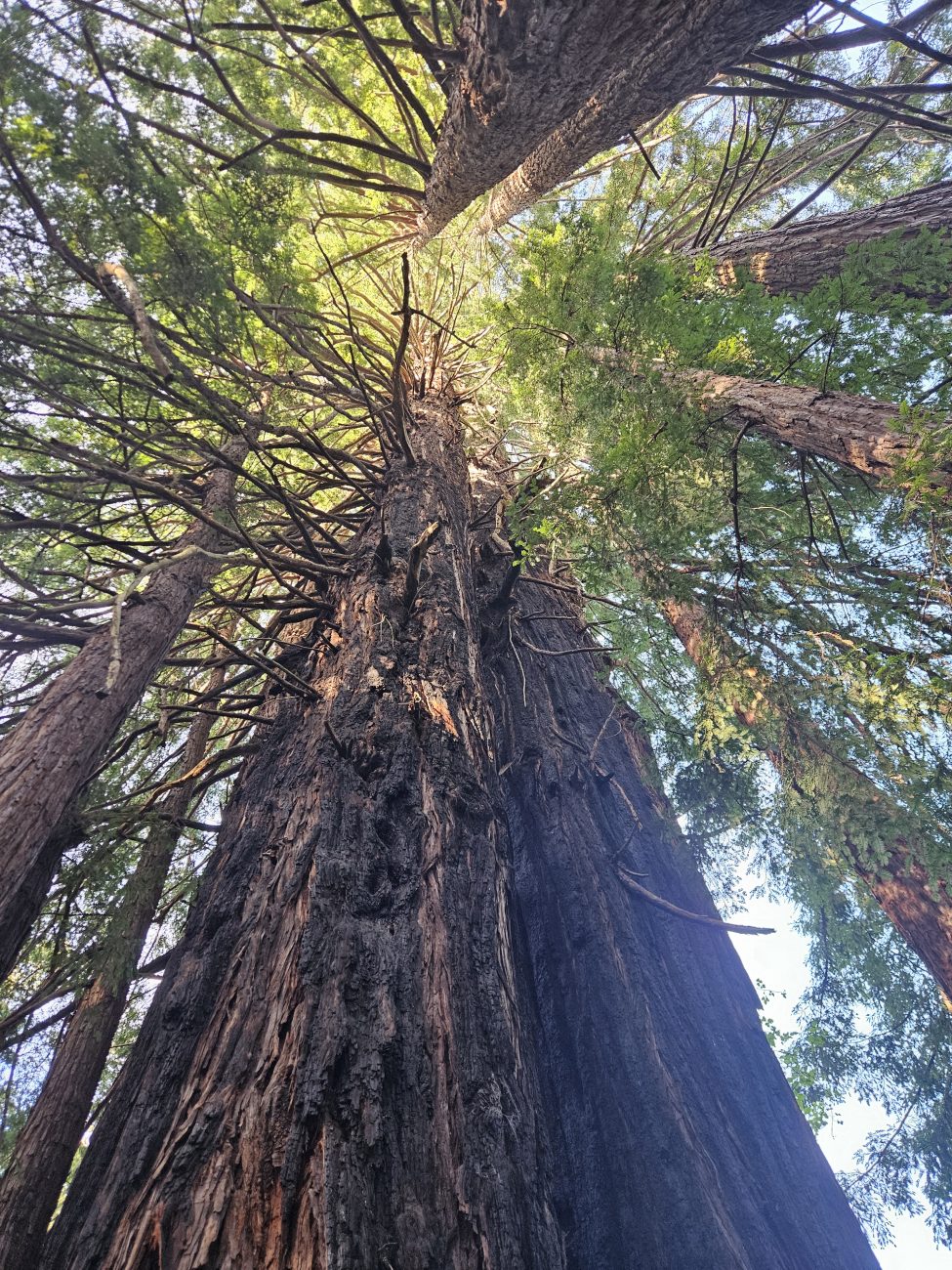
Sequoia sempervirens
10 April
After checking out of the accommodation in San Francisco, I headed south along the west coast to UC Santa Cruz Arboretum and Botanic Garden where I did a self-guided tour. I then continued heading south along the coast stopping briefly at Moss Landing State Beach, before reaching Point Lobos State Natural Reserve where I spent a few hours walking the trails and botanising. I drove along 17 Mile Drive, stopping briefly at Crocker Grove, home to the largest and oldest Hesperocyparis macrocarpa (Monterey Cypress) and one of only two places where it grows naturally, the other being Point Lobos. I then headed into Monterey itself to spend the night.
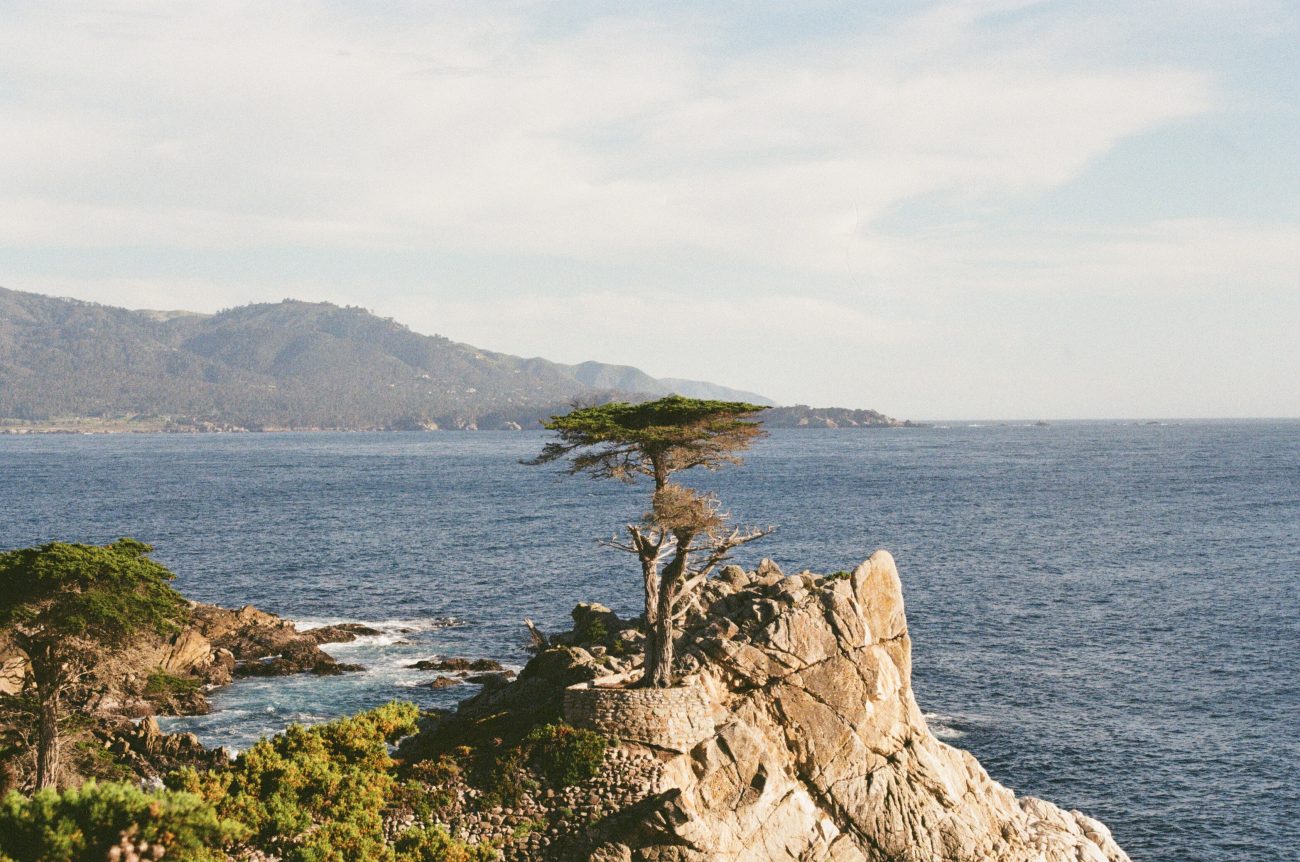
Hesperocyparis macrocarpa
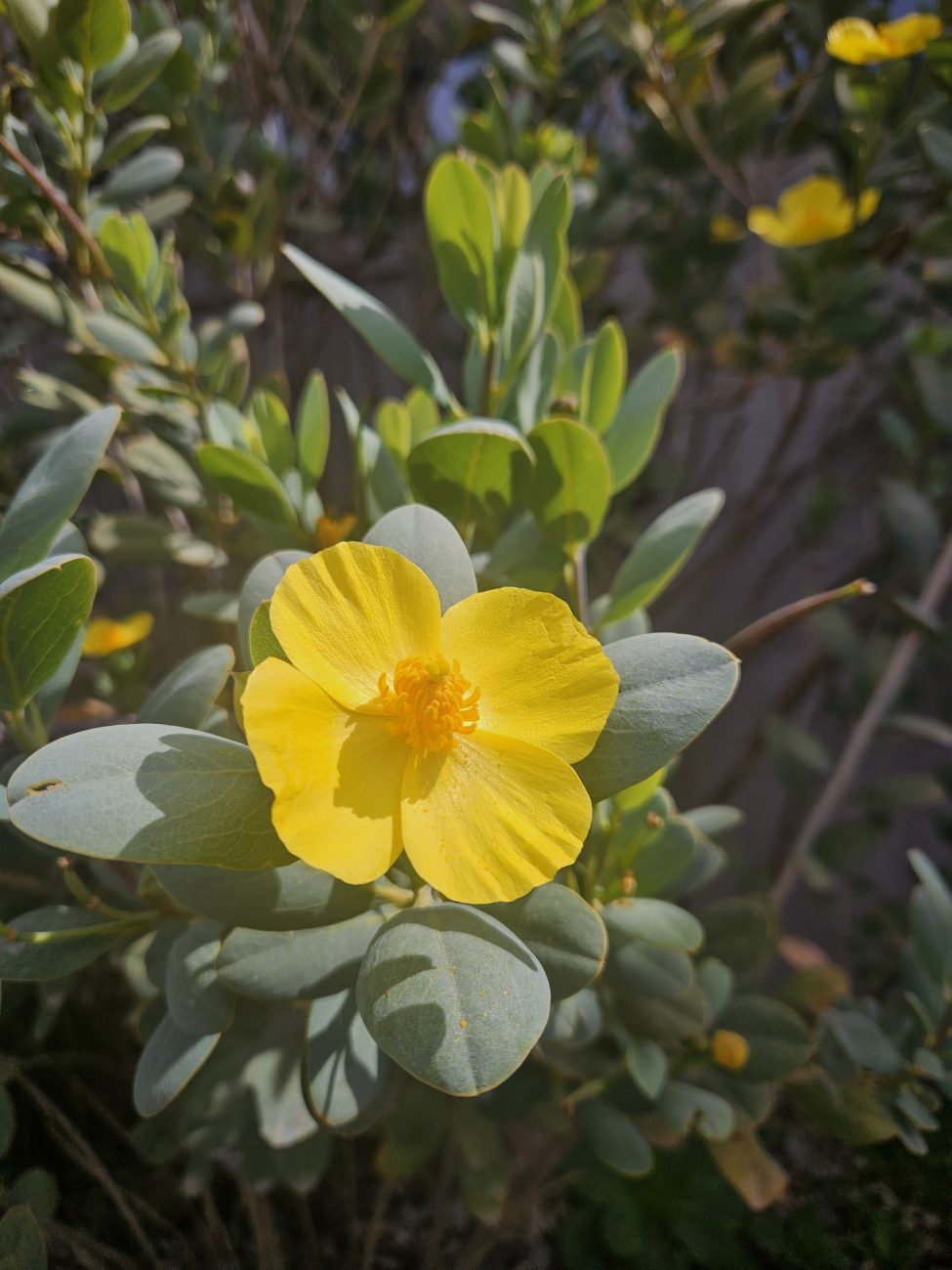
Dendromecon harfordii
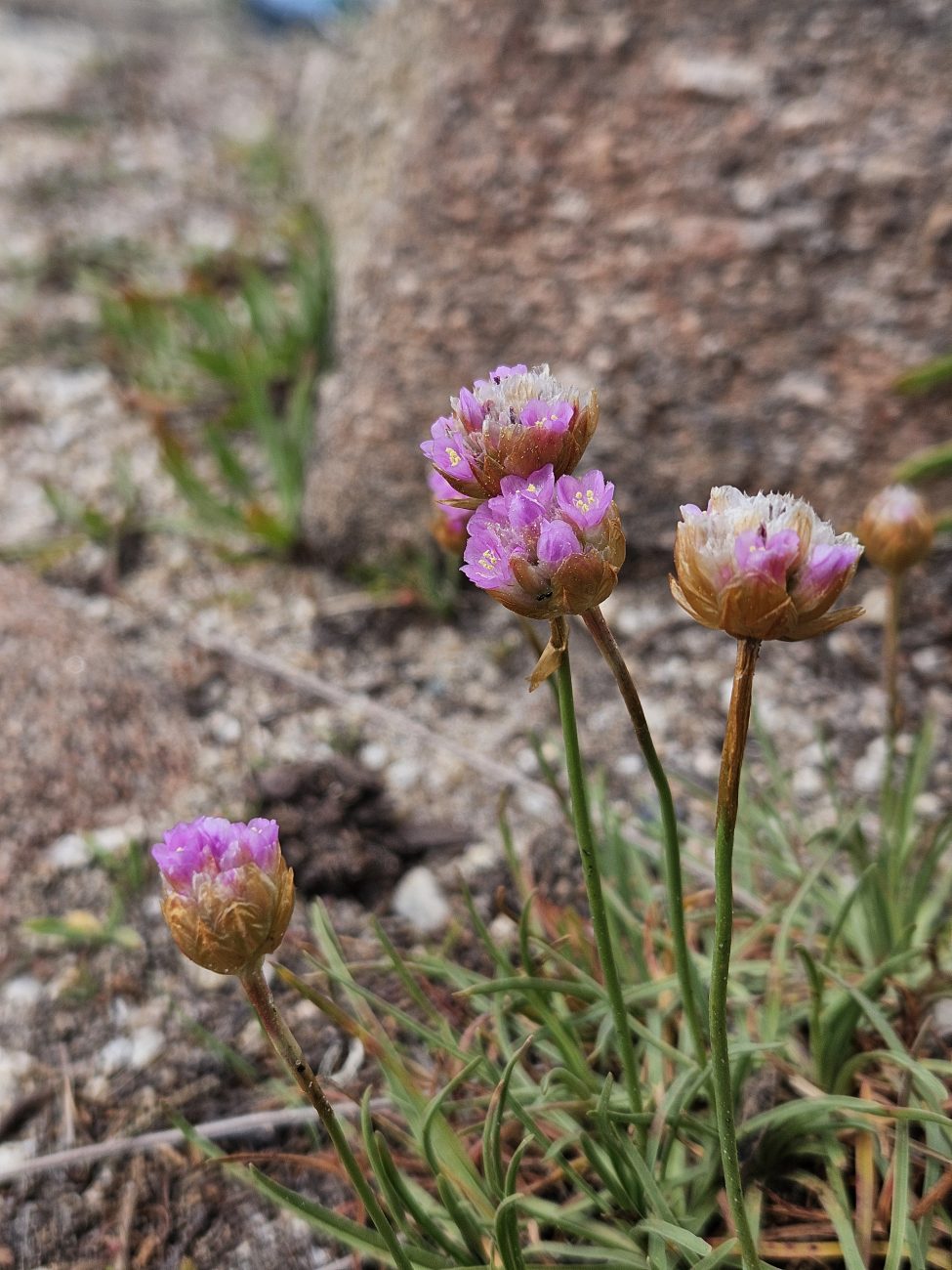
Armeria maritima subsp. californica
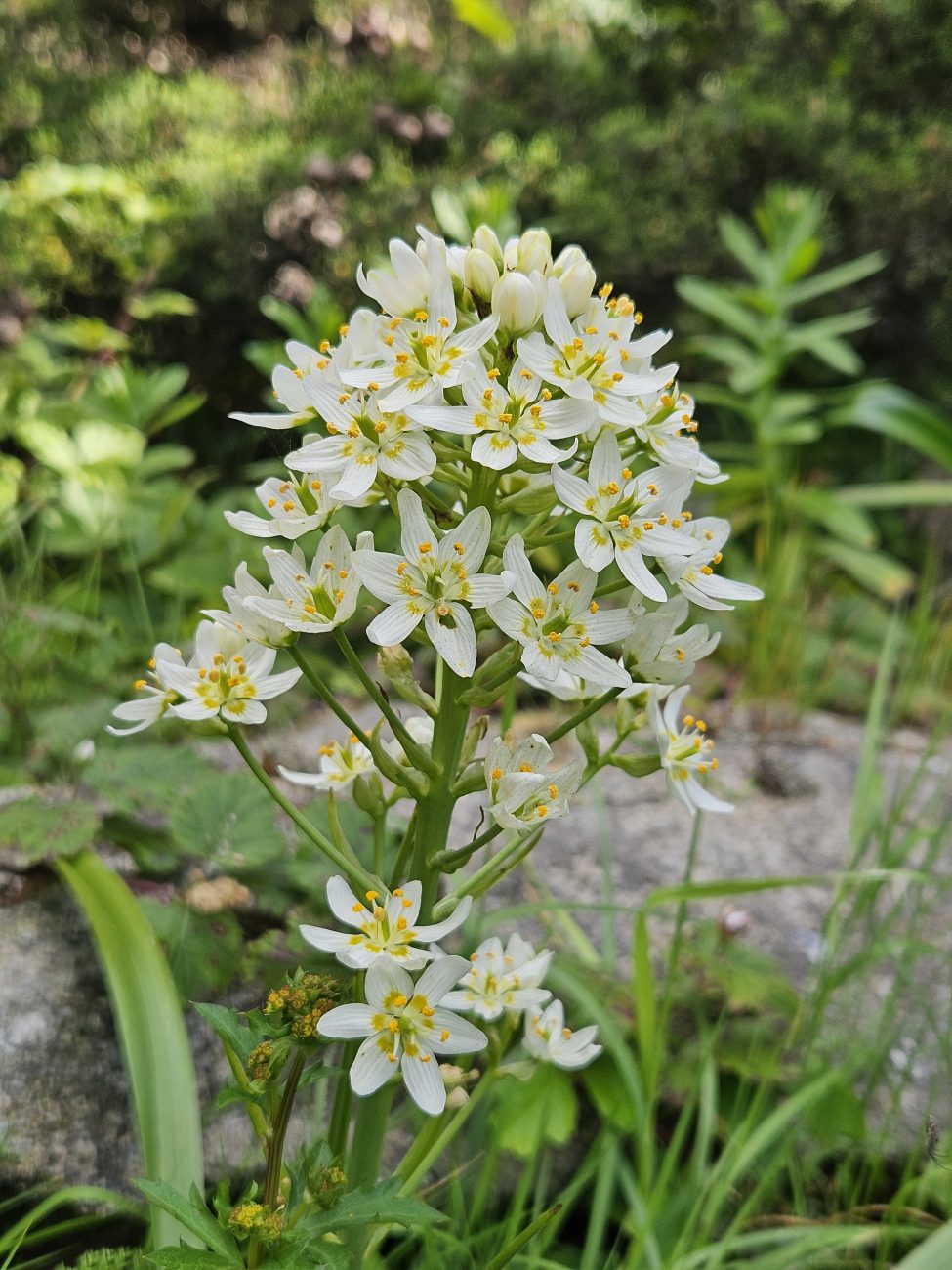
Toxicoscordion fremontii
11 April
After leaving Monterey, the plan was to head south along highway 1 and botanise regularly through Big Sur. However, due to road closures caused by landslides, a large portion of the highway was closed. Therefore, I diverted along highway 101 before coming off and driving through Big Sur from East to West past Fort Hunter Liggett, a US Army base, along Nacimiento-Fergusson Road through the outskirts of Los Padres National Forest, botanising along the roadside. I then joined highway 1 south of the road closure and continued my journey along the coast, stopping occasionally to botanise such as at Valencia Peak trail, before reaching my overnight accommodation in Santa Barbara.

Lupinus nanus, Lasthenia californica and Castilleja exserta
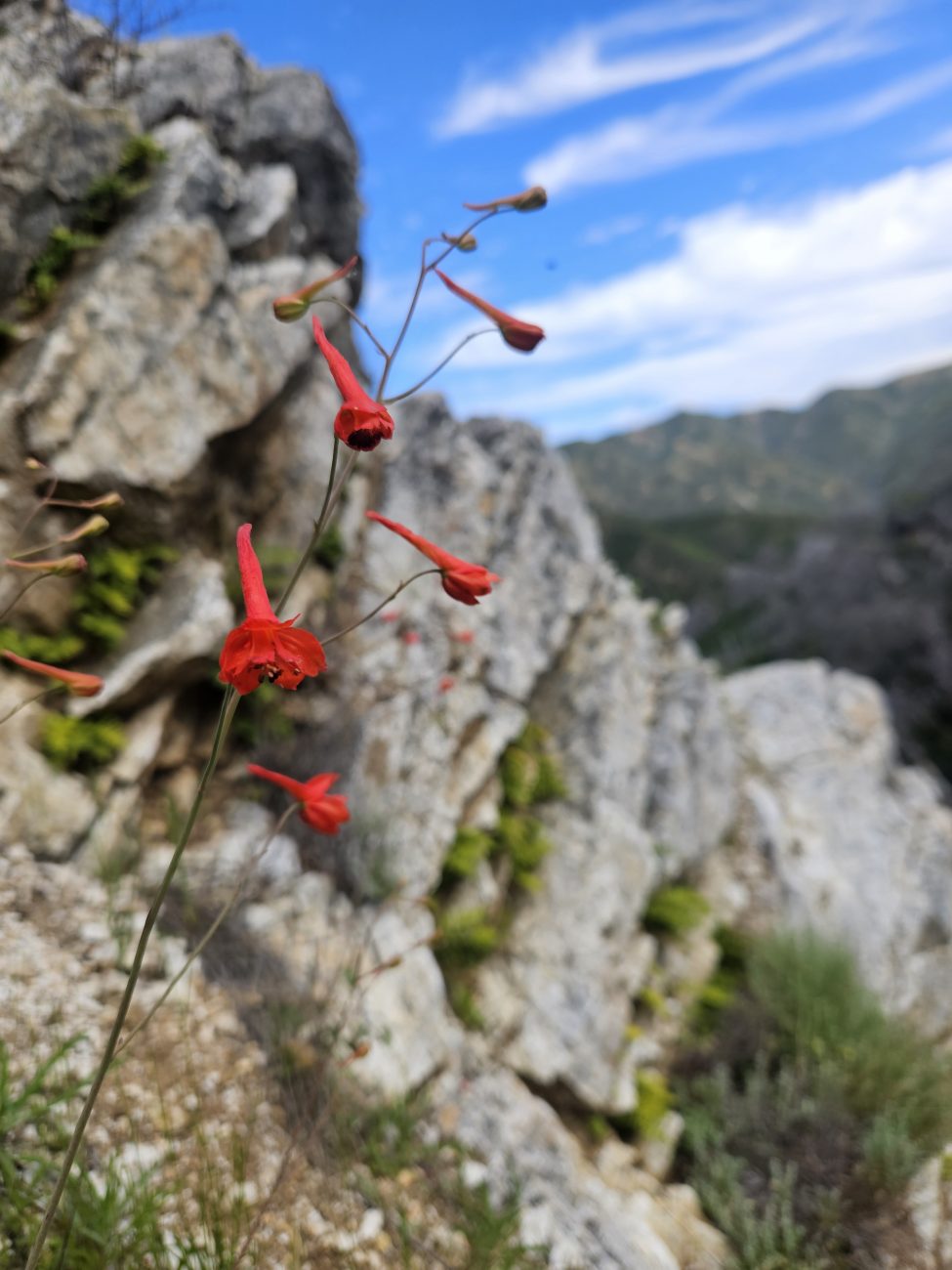
Delphinium nudicaule
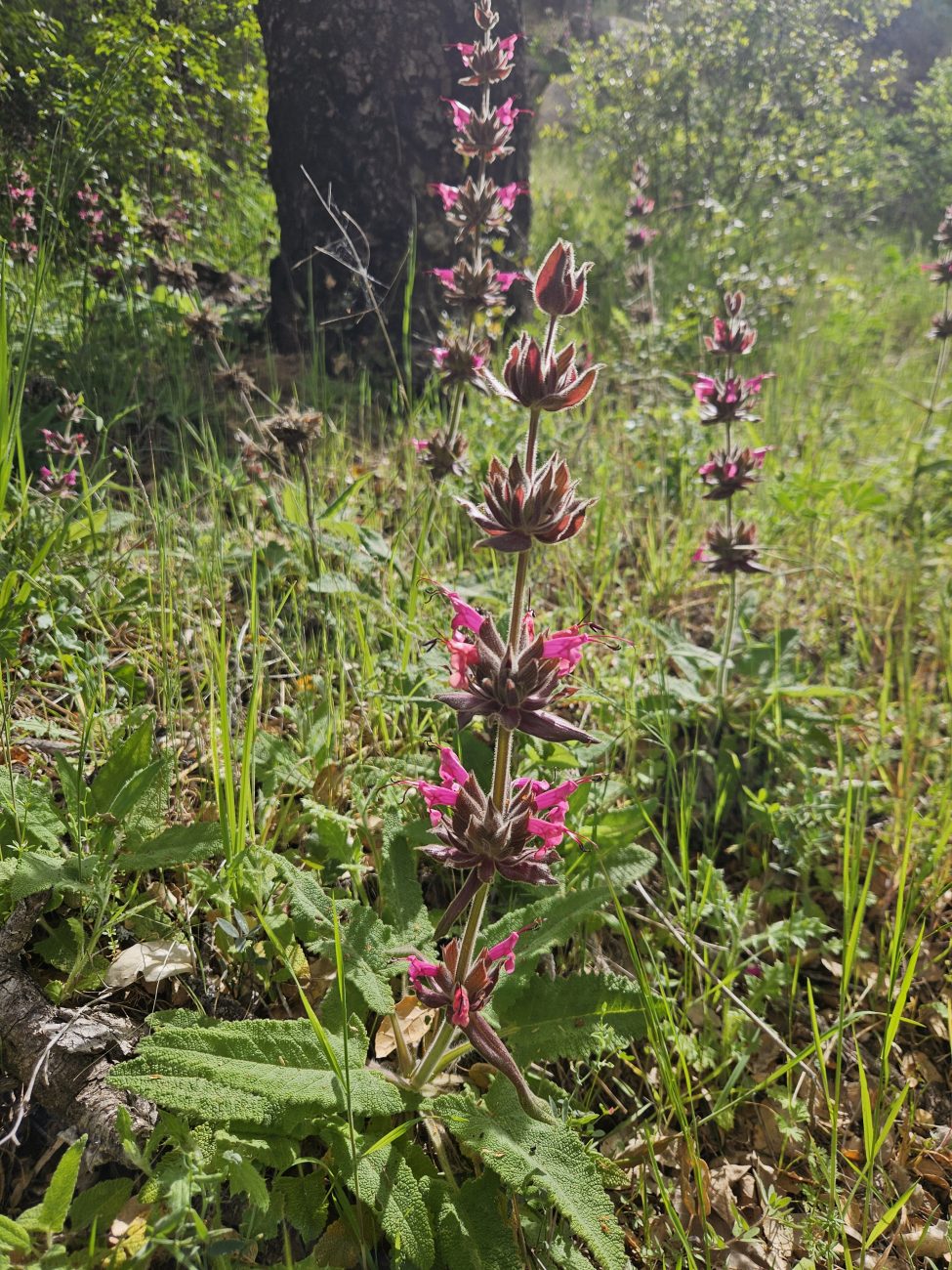
Salvia spathacea
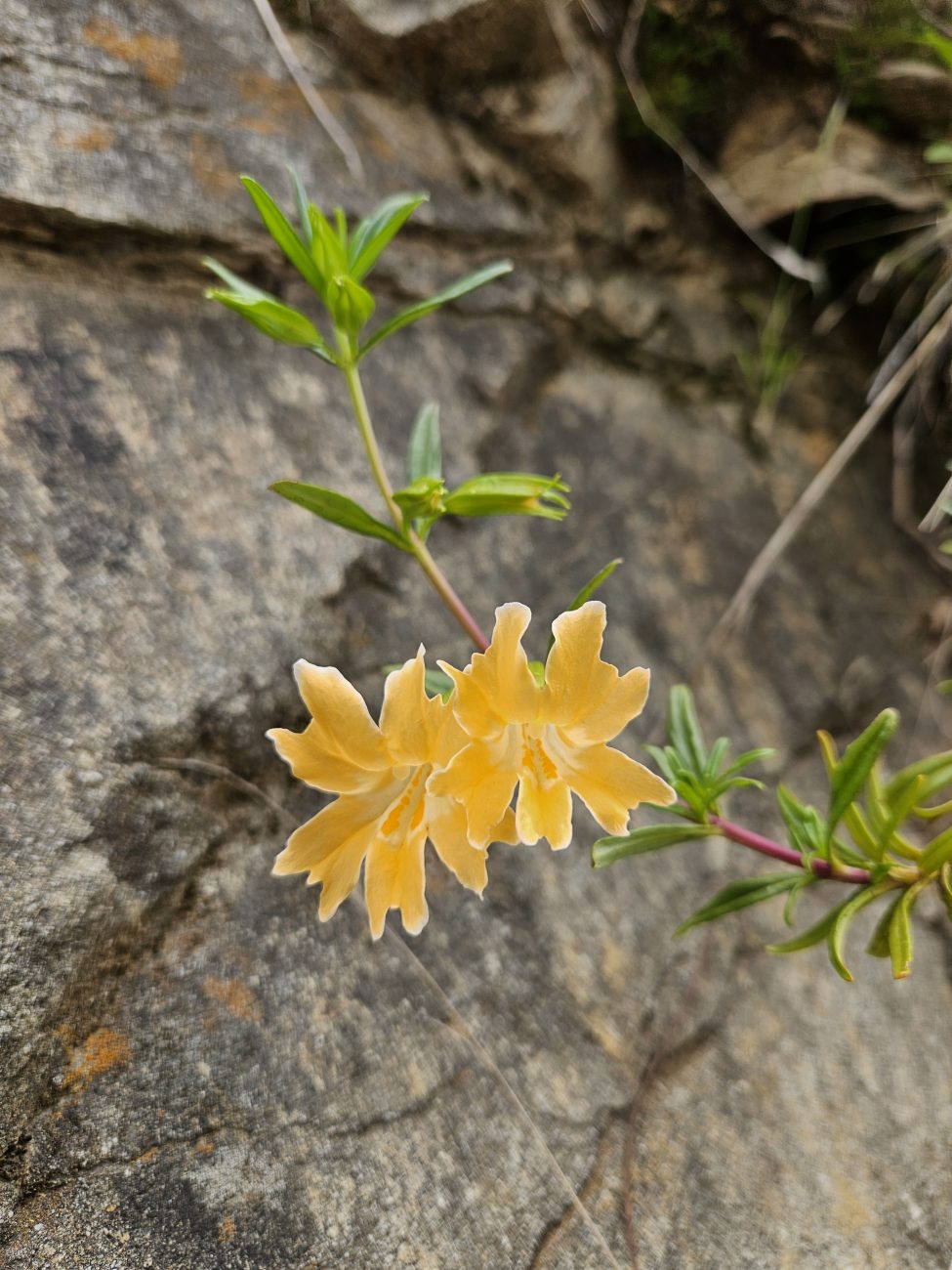
Diplacus grandiflorus
12 April
The morning was spent being shown around Lotusland by curator Paul Mills. We spent time looking at the tropical, Cycad, Bromeliad, Japanese and shade palm gardens, the Dracaena circle, and the orchards, but the highlights for me were the Aloe garden and the two cacti gardens. Since the beginning in 1941 Lotusland has had a cacti and succulent garden in the beds directly in front of the main house. However, a second cactus garden was added in 1999 after a large collection of 530 plants was bequeathed to Lotusland by Merritt Dunlap. After leaving Lotusland, I had a quick lunch in the car before taking a quick botanising walk for half an hour in Rattlesnake Canyon. It was then time to head across town to Santa Barbara Botanic Garden to meet director of horticulture, Keith Nevison. He showed me around the garden which grows only Californian native species in exhibits demonstrating natural habitats, before I returned to my accommodation for the evening.
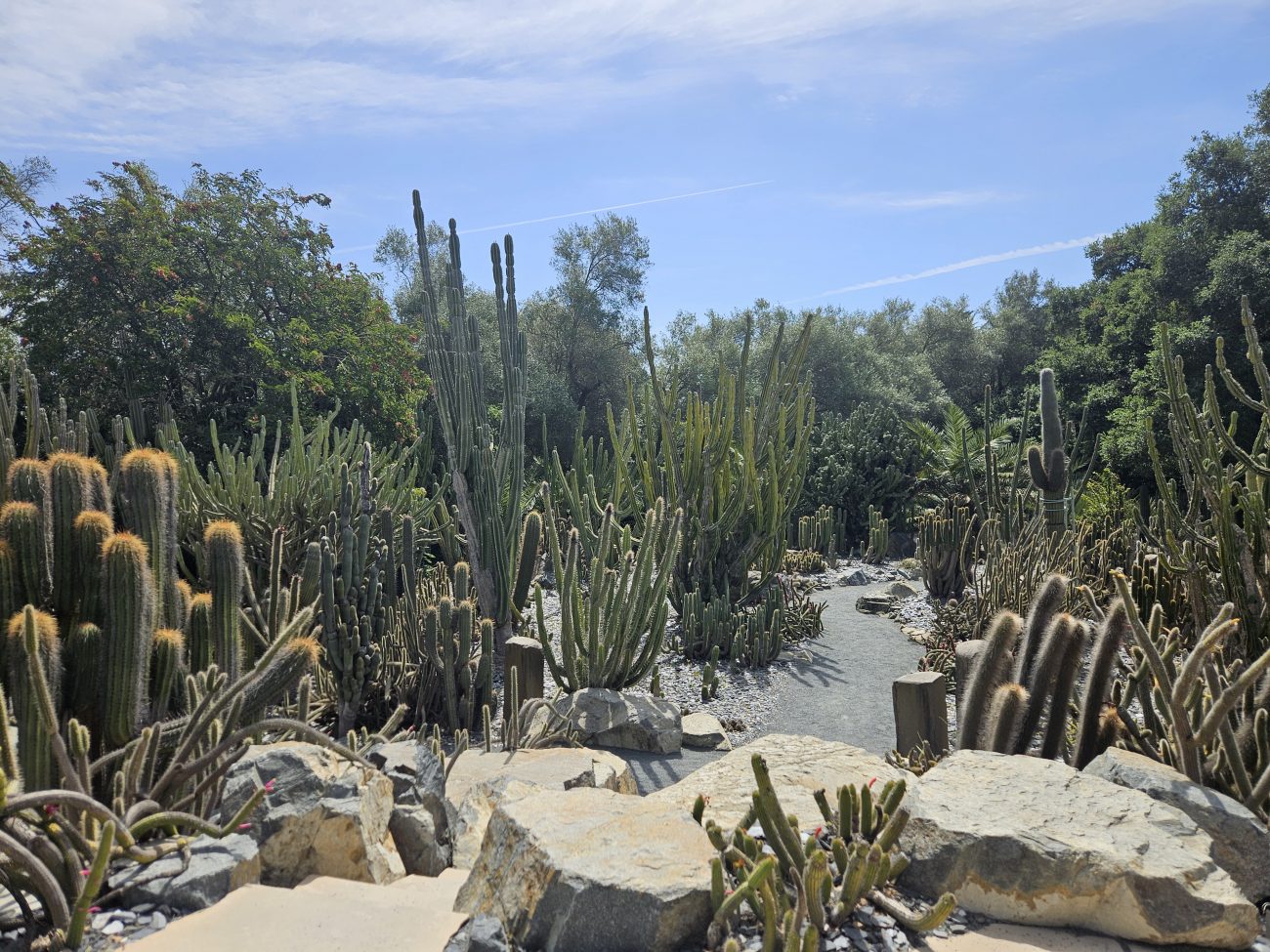
Merritt Dunlap Cactus Garden

Opuntia galapageia var. profusa
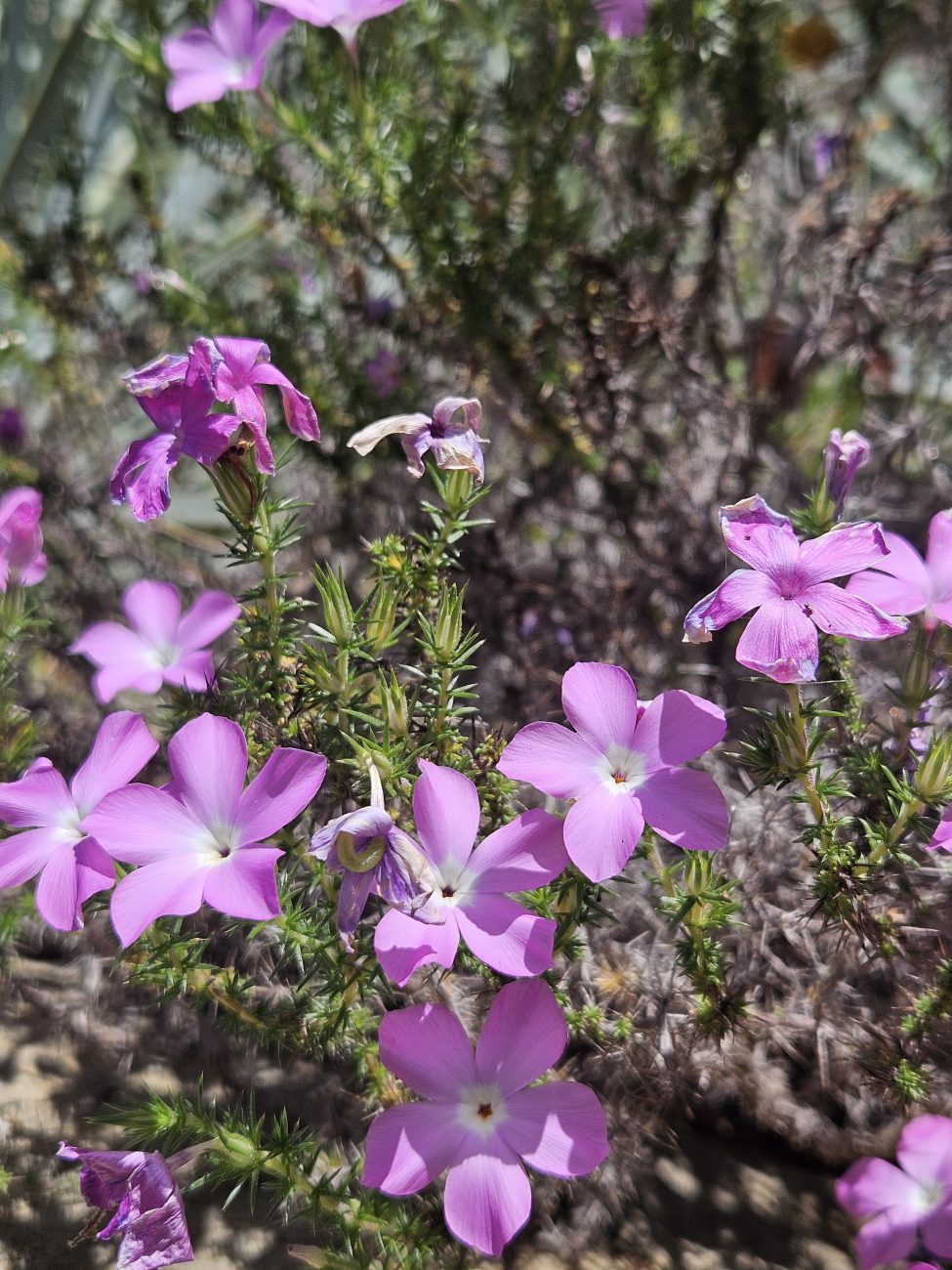
Linanthus californicus
13 April
After leaving my accommodation in Santa Barbara, I headed south on 101 towards the Santa Monica Mountains. My first stop was to see the Wallis Annenberg Wildlife Crossing which is currently being built across highway 101. This crossing is being built to help connect pockets of wild area so that mountain lions and other wildlife may roam more freely and reduce the amount of mountain lions killed on the highway in road accidents. I then spent a spent a short time botanising in the Agoura Hills, before heading further into the Santa Monica Mountains. The remainder of the day was spent botanising extensively throughout the mountain range and coast in places such as Solstice Canyon, Point Dume, Backbone Trail, Rocky Oaks, Paramount Ranch, Regan Ranch and Grasslands Trail before spending the night in a cabin just off Old Topanga Canyon Road.
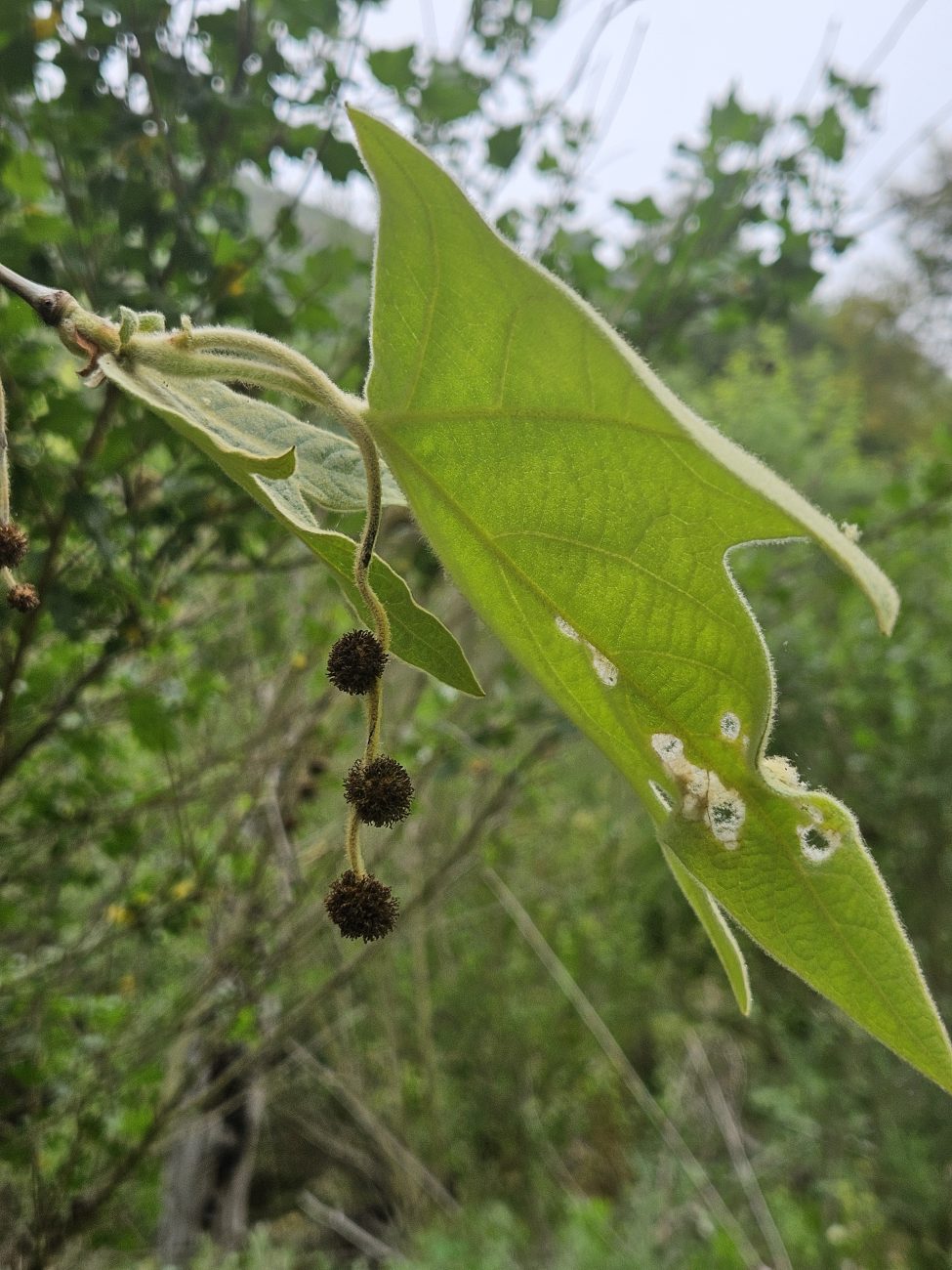
Platanus racemosa

Calandrinia ciliata
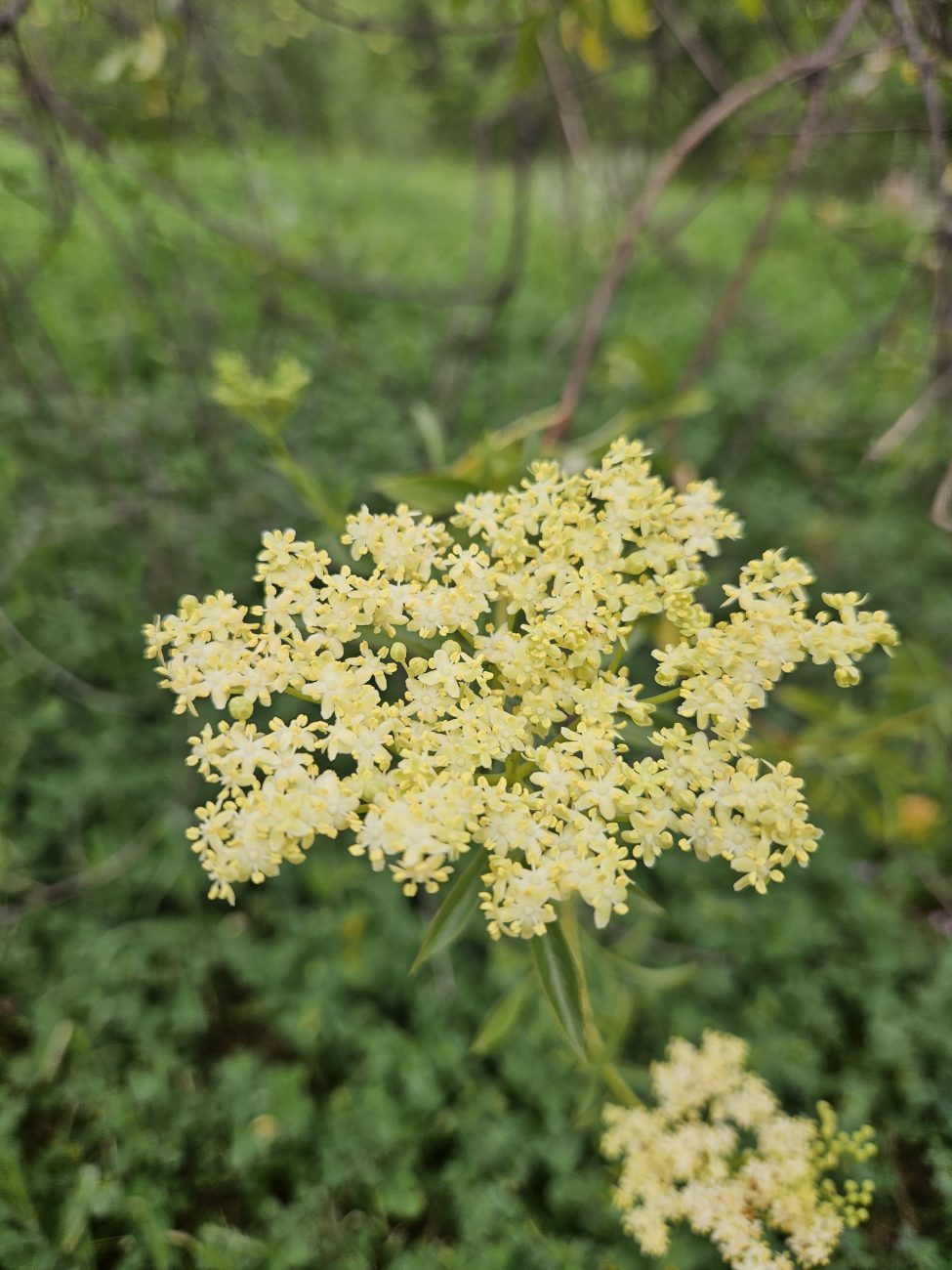
Sambucus caerulea
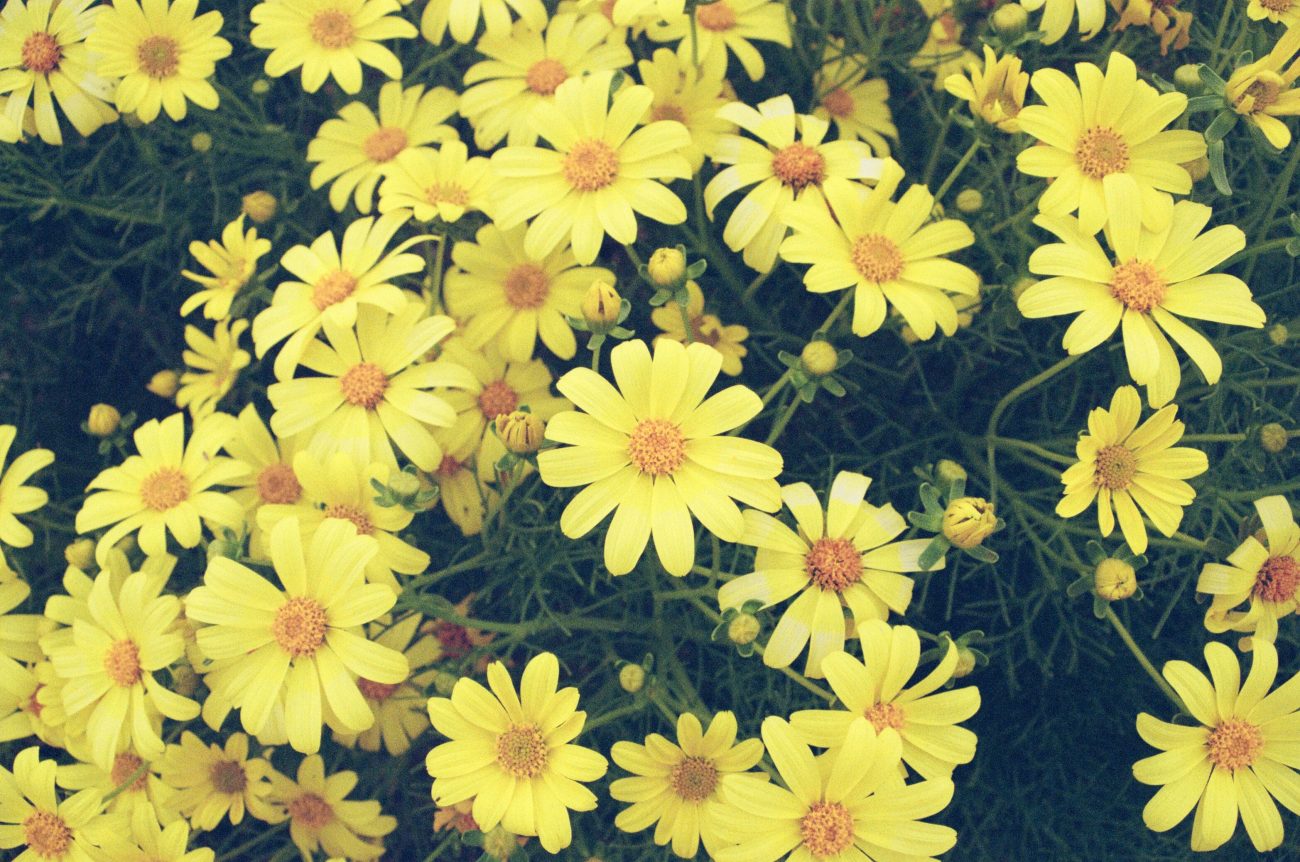
Leptosyne gigantea
14 April
Today I headed north east out of Santa Monica Mountains into the outskirts of the desert where my destination for the day was Antelope Valley California Poppy Reserve to see the wildflower displays of Eschscholzia californica. However unfortunately, due to the weather and reduced rainfall over the winter, there were not many flowering. However, luckily on one of the roads I drove on nearby, a canyon must have provided just the right conditions for flowering this year and I was treated to a display of these plants flowering. Although not on such a massive scale as is possible at Antelope Valley, I was still really grateful to have had the opportunity to see a natural display of Californian poppies like this. I then headed to Arthur B. Ripley Desert Woodland State Park, a preserved area of rare Joshua Tree and California Juniper woodland habitat that would have once grown throughout the western Antelope Valley. This rare habitat has been made even rarer due to development and agriculture and Arthur B. Ripley Desert Woodland State Park is one of the last pristine examples of this important ecosystem. I then returned to my accommodation in the Santa Monica Mountains for the night.
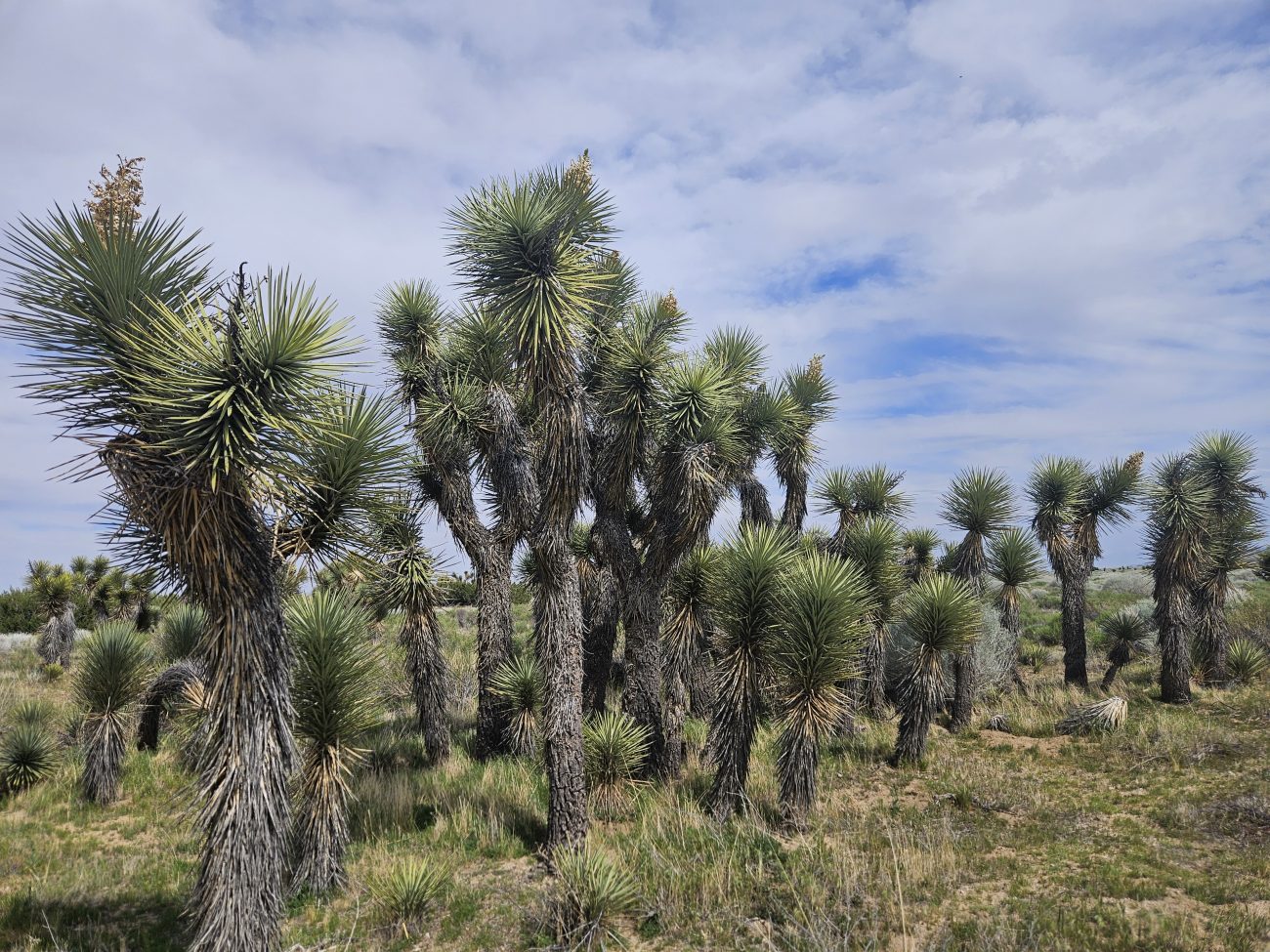
Yucca brevifolia
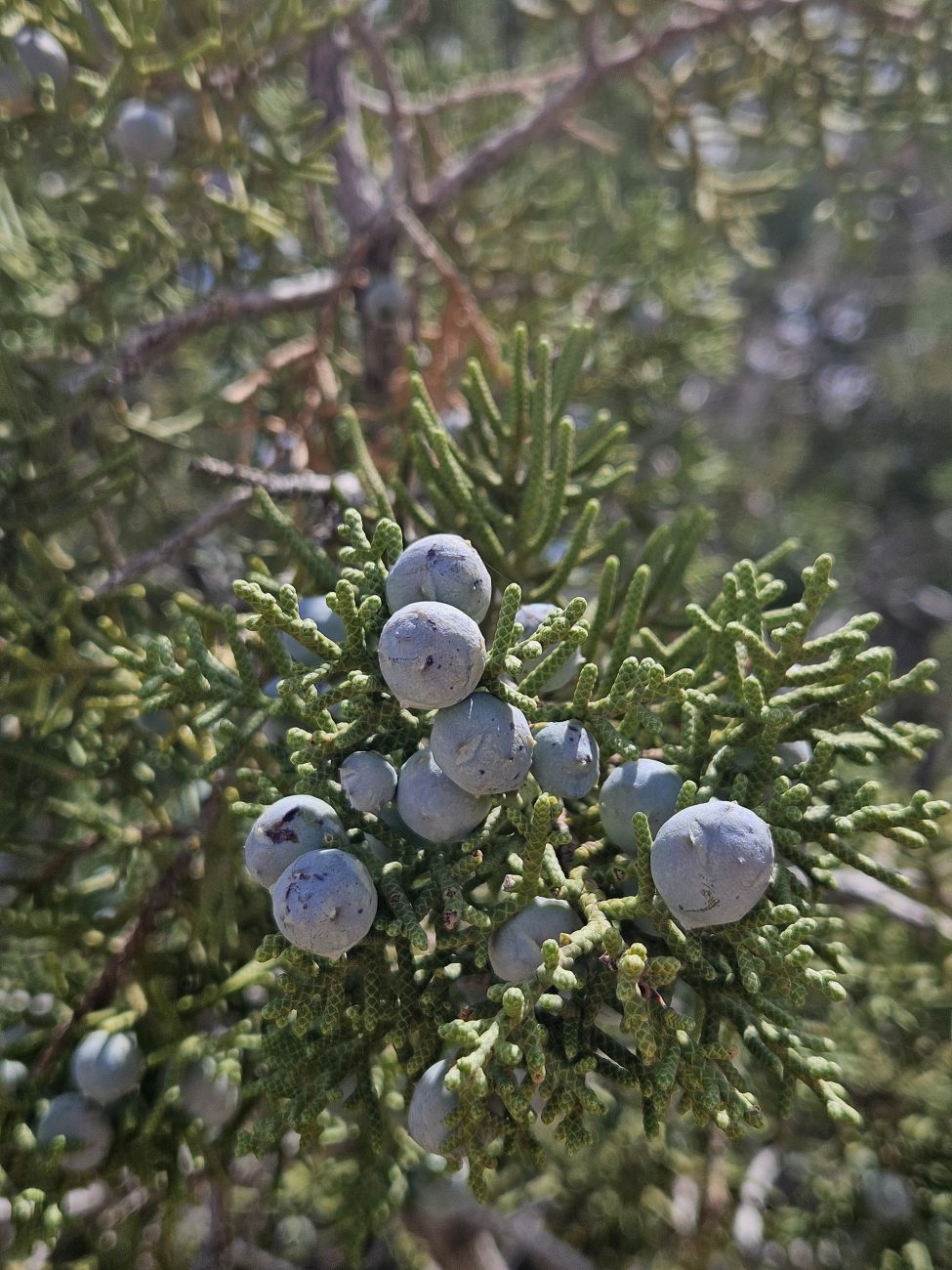
Juniperus californica
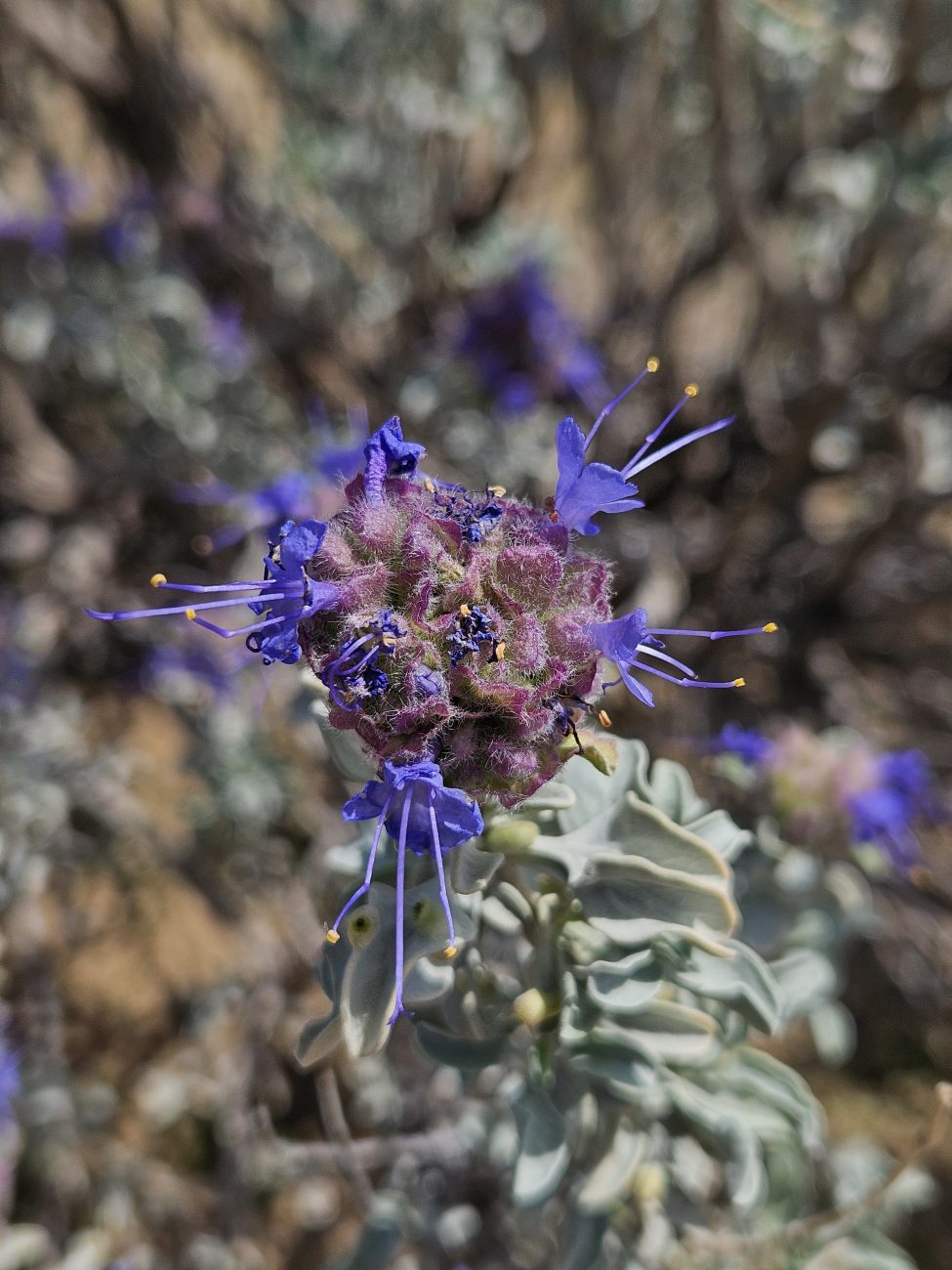
Salvia dorrii
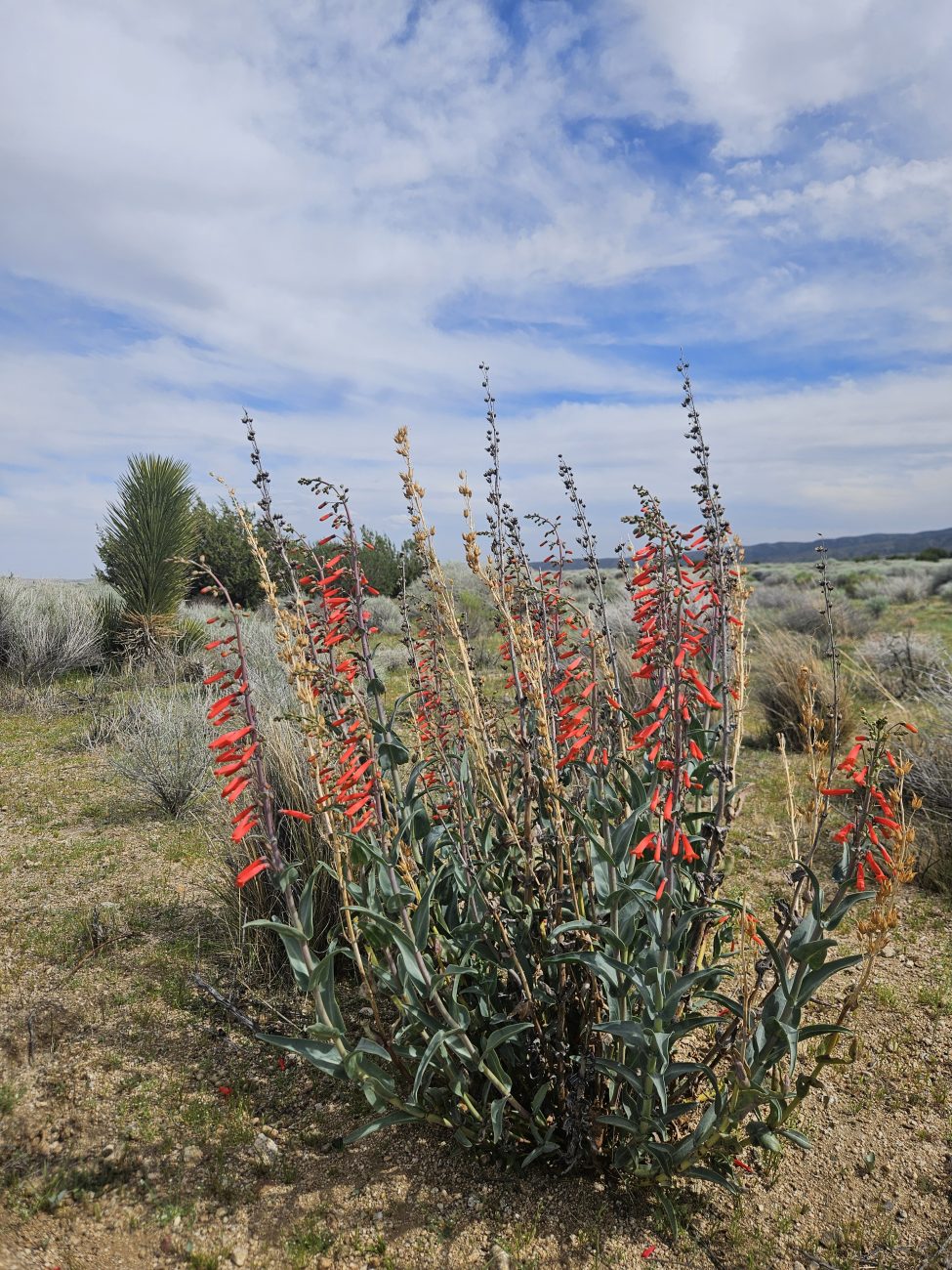
Penstemon centranthifolius
15 April
After checking out of my accommodation in the Santa Monica Mountains, I had a rest day and slowly made my way into LA where I checked into my new accommodation which is where I would be based for the remainder of my time in California.
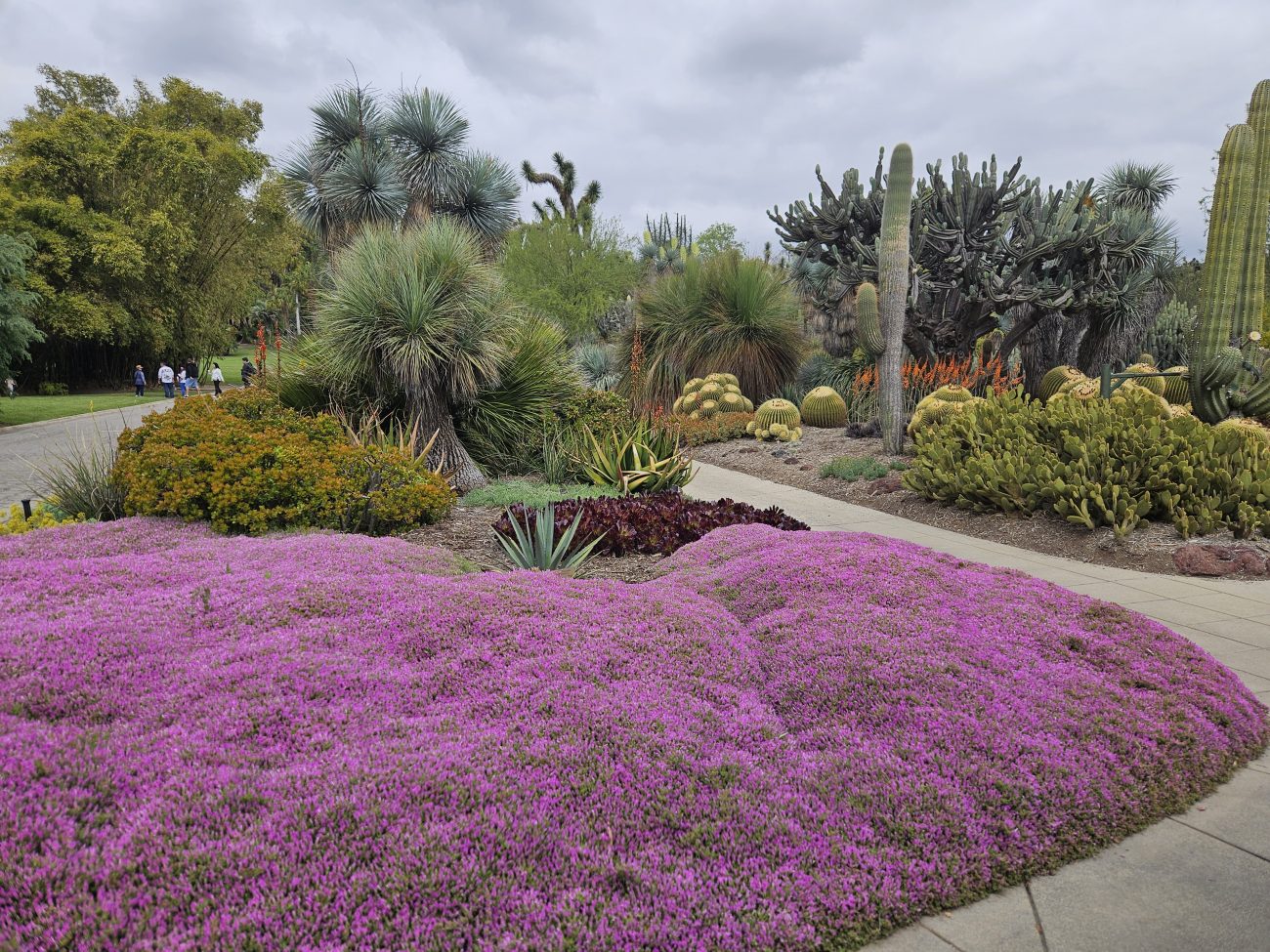
Drosanthemum floribundum in the Desert Garden at Huntington
16 April
The morning was spent at Huntington Library and Botanic Gardens where I was shown around the native Californian plant collections, the Citrus Orchards and the Desert Garden. The afternoon was then spent at the Autry Museum of the American West, learning more about the indigenous peoples of California and ethnobotany of Californian native plants.
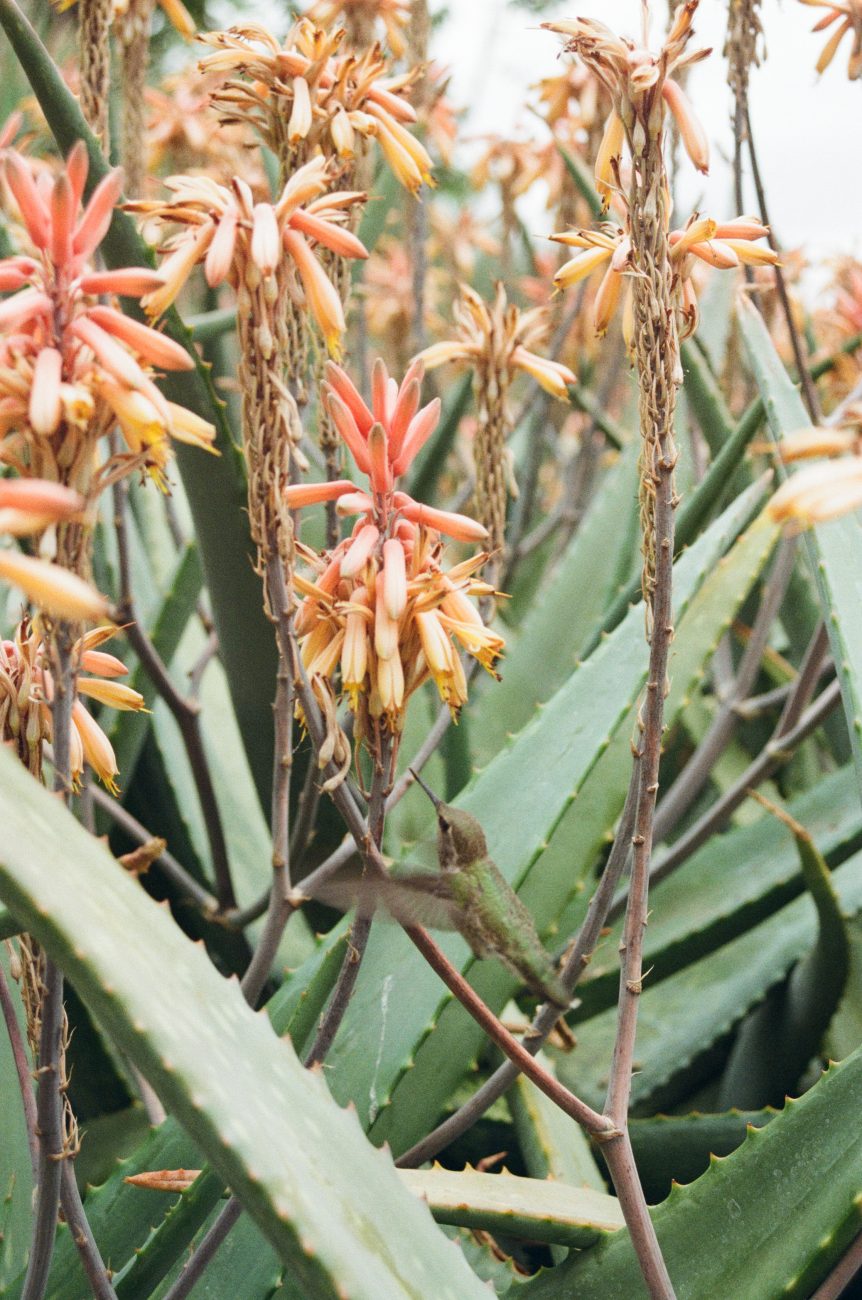
Hummingbird on Aloe striata
17 April
The final day of the trip was spent at California Botanic Garden with the Director of Horticulture, Ashlee Armstrong. We toured around the garden, which grows only Californian native plants, exploring all the exhibits and talking about cultivation of different species. I then returned to my accommodation to pack ready for the journey home.

Quercus agrifolia

Romneya coulteri
18 April
I checked out of my accommodation in the morning, headed to Manhattan Beach and Playa Del Rey Beach for a couple of hours, before returning the hire car and catching my flight home.
Conclusion
My aim when starting out on this trip was to learn more about the flora of California and explore the desert habitats to learn more about the Cacti, succulents and other plants which inhabit these environments as well as learning more about citrus cultivation in the region. I believe that my aims have been met. This trip enabled me to experience a large range of plants growing in their native habitats and in a range of different environments. My plant identification skills have been enhanced, and I have gained a greater understanding of how Californian native plants survive in the habitats they call home. This has given me more of an understanding of how to care for them in cultivation and has ultimately allowed me to develop as a horticulturist.
The trip was highly successful and highly educational, more so than I could have ever imagined. It is my intention to return to California in the future to explore the central valley and northern California more which were areas mostly missed during this trips itinerary.
Costings
The estimated cost of the trip when planning and applying for the bursary awards was £5,574.50. Upon completion of the trip, a total of £5,623.53 was actually spent. This was an overspend of £49.03 compared to the budget, and an accuracy of 99.12 per cent. Full costings are included below. Further breakdowns are available upon request.
| Expense | Cost | |
| Flights | £870.99 | |
| Car Hire | £1,084.14 | |
| Fuel | £362.04 | |
| Accommodation | £2,117.34 | |
| America the Beautiful Pass | £61.92 | |
| Travel Insurance | £171.92 | |
| ESTA | £16.94 | |
| Parking | £13.91 | |
| Heathrow Parking | £311.50 | |
| San Diego Garden Entry | £13.96 | |
| E Sim | £13.97 | |
| Tolls | £23.08 | |
| Food and Drink | £561.82 | |
| Total | £5,623.53 | |
| Total | £5,623.53 |
| Budget | £5,574.50 |
| Overspend | £49.03 |
| Accuracy | 99.12% |
Acknowledgements
Without the following, this trip would not have been either possible, or as successful. My sincere thanks to:
Mediterranean Plants and Gardens
RHS Bursaries
The Merlin Trust
The Thistledown Horticultural Bursary
The Eden Project
All photos were taken by me.

